Denver Art Museum
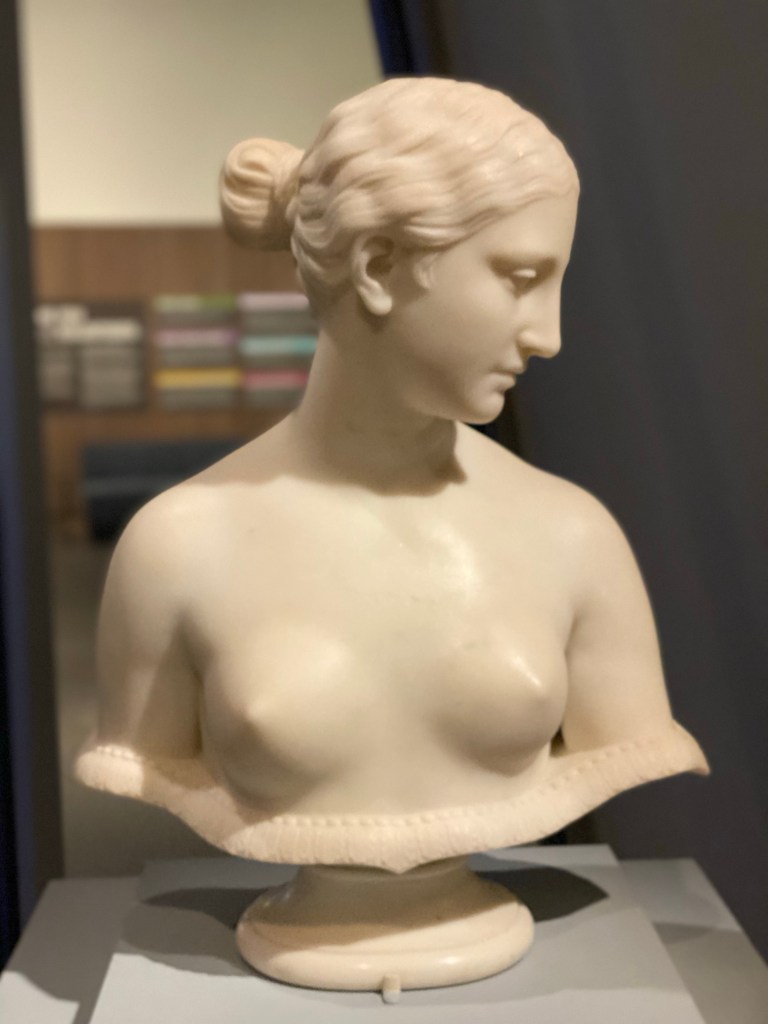








Denver Art Museum









Our transport will be a visit to the Denver Art Museum.







These pictures barely touch the collection. I’ll go back and do better next time.
As I look back on my travel to Piacenza exactly 2 years ago, I am filled with longing to return. There is still so much left to explore. Soon, self, I promise!





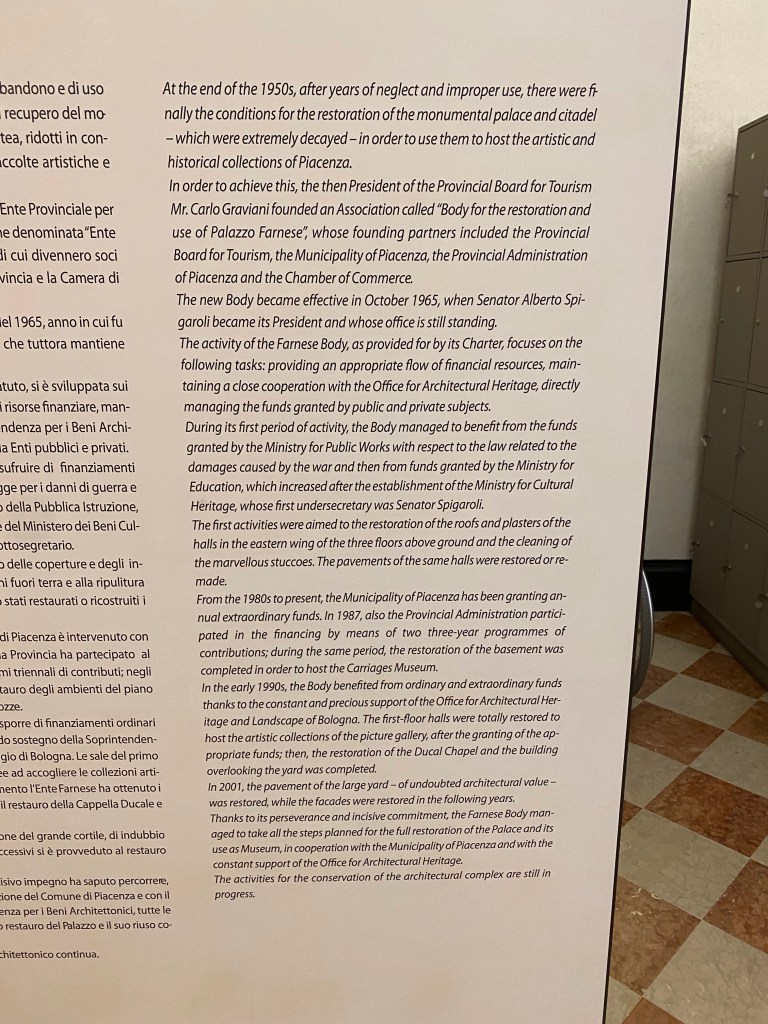


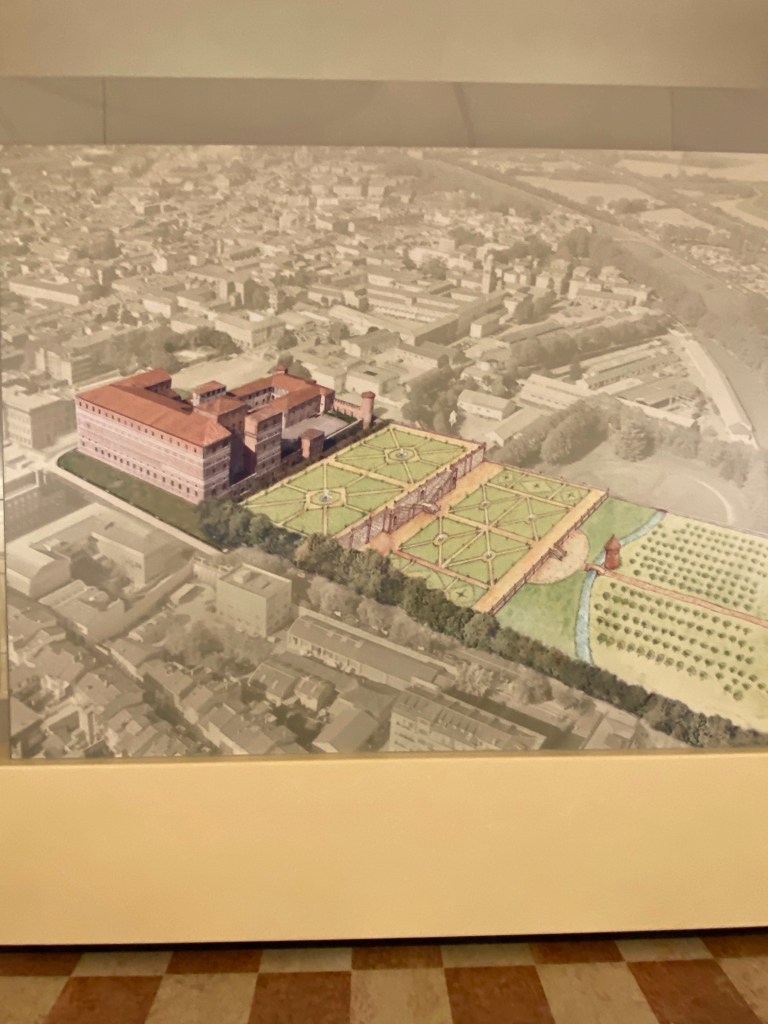
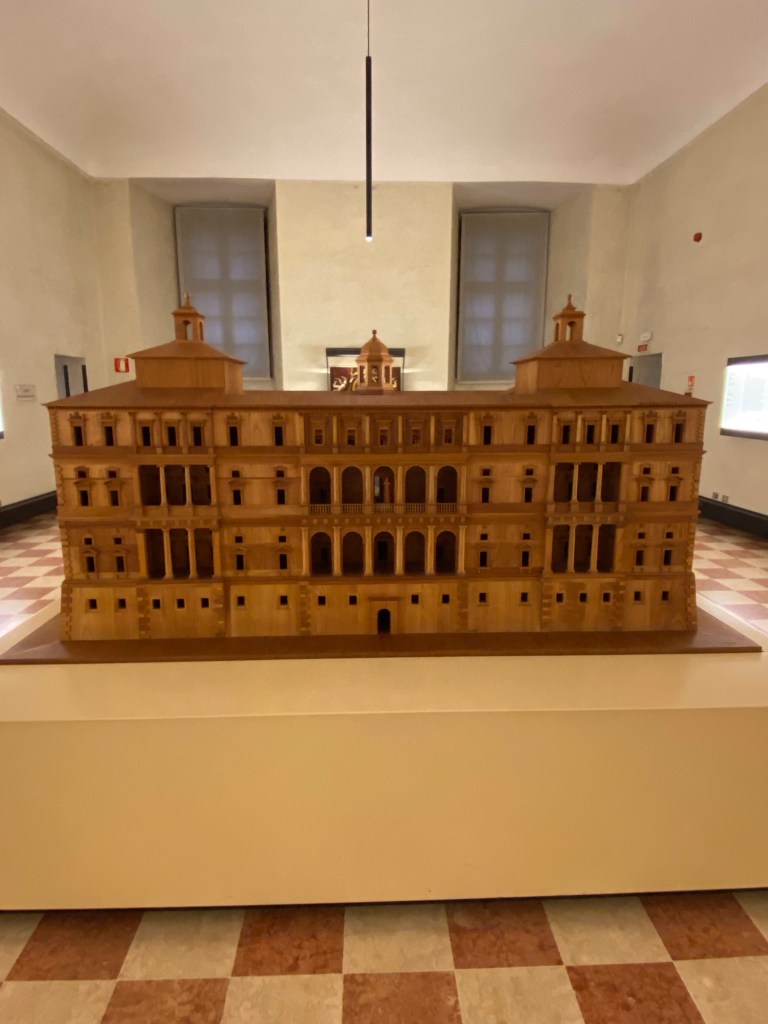










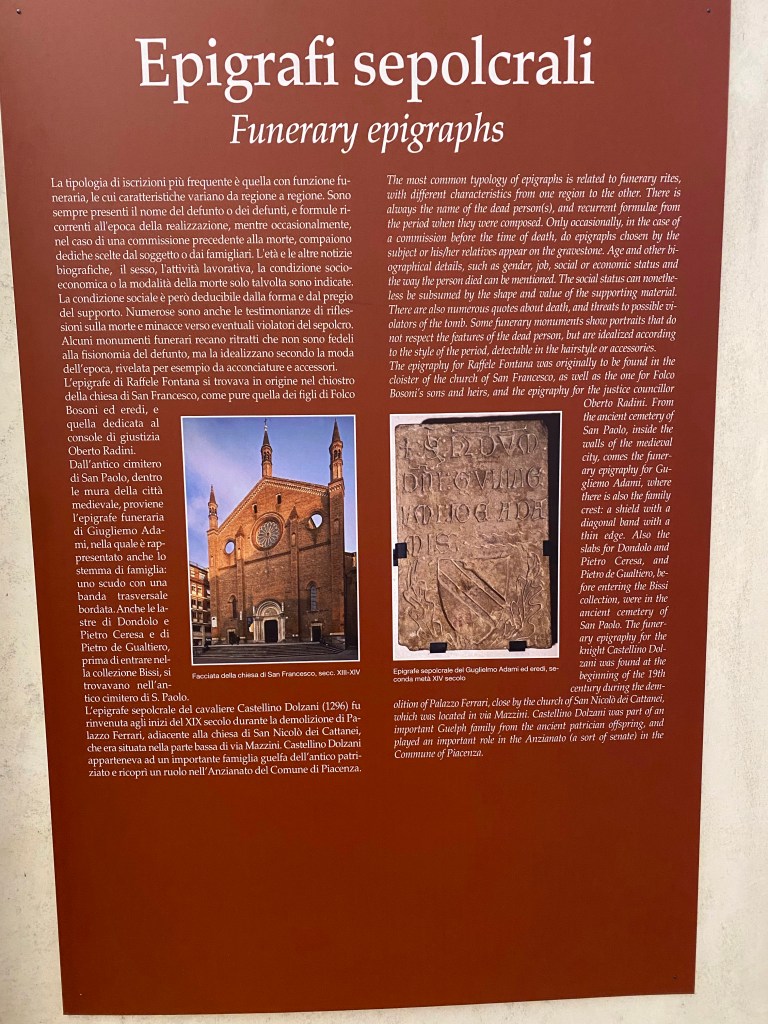
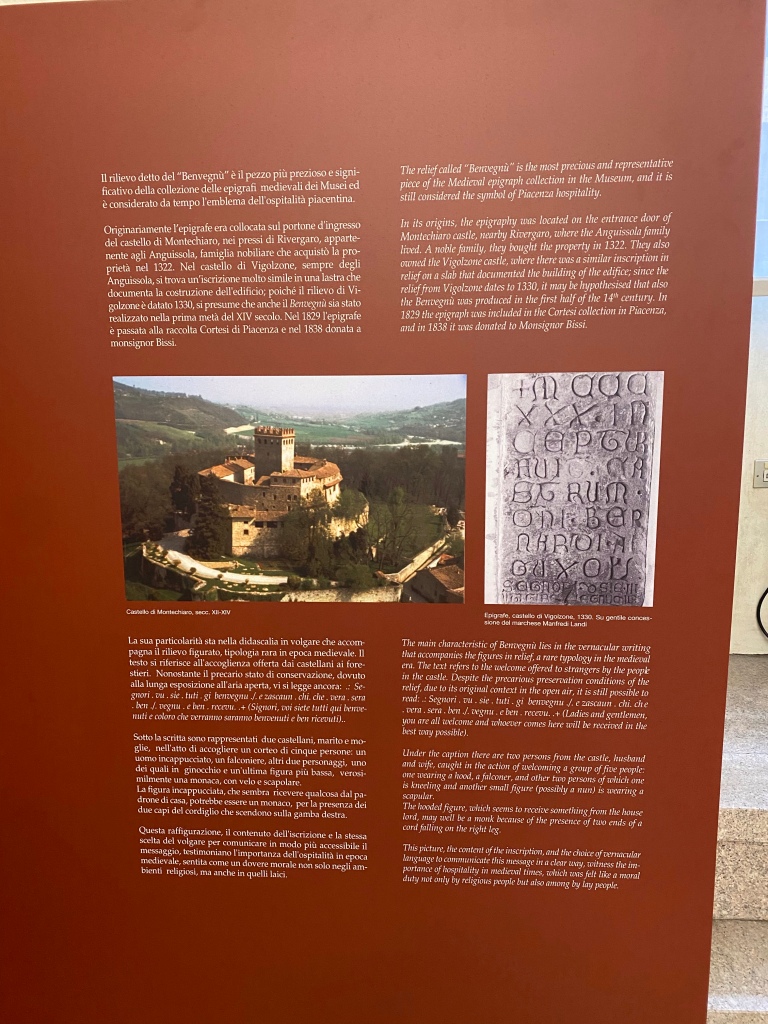



















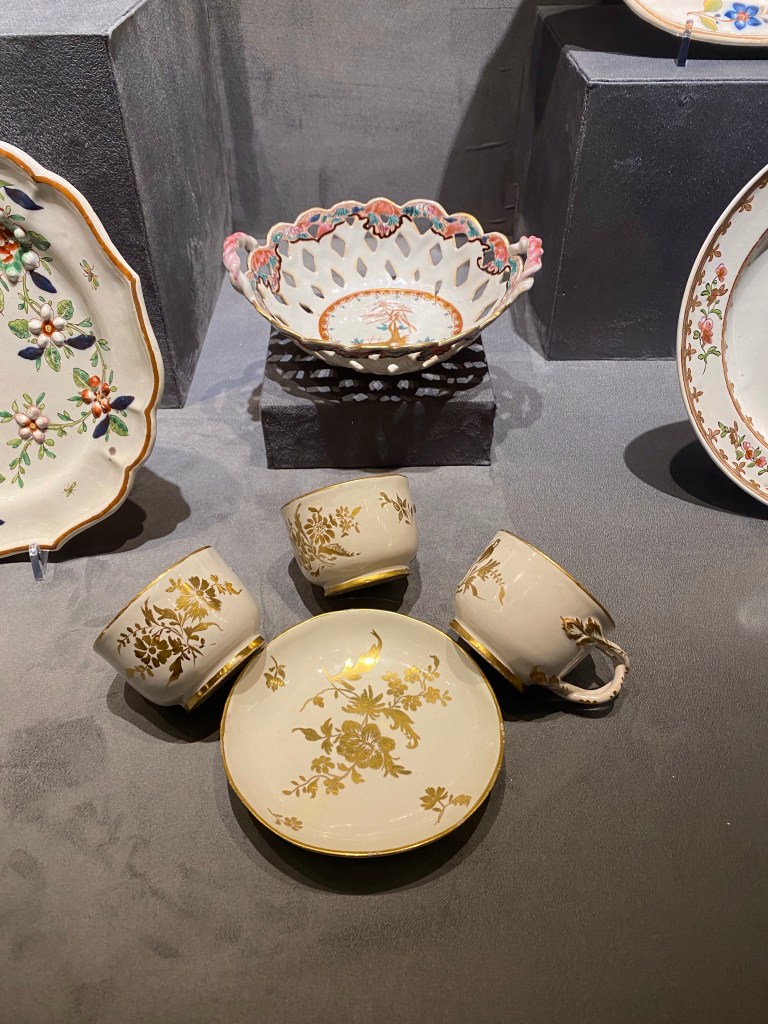












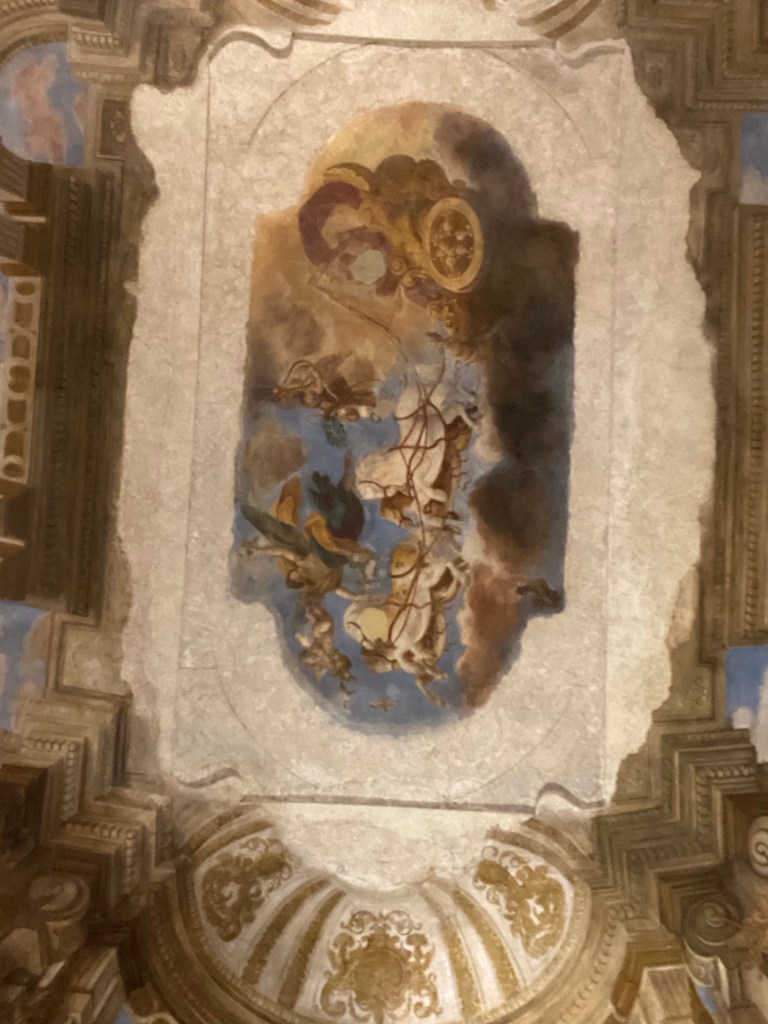

And I paid a visit. It was not like the old days, where you could wander at will, which is very sad. Now they have a “percorso” or path, which you have to follow and they have guards in every room watching you like a hawk. It didn’t feel like they were watching out for Covid. It felt like they thought I was going to damage or steal the art. I didn’t care for it. Plus, I was one of 3 visitors. I mean, really?
Despite my complaints, the museum is still a wonderful place with a fascinating collection. It is one of my favorite museums in Florence. Here are a few of my favorite things:



The unusual sculpture above, showing a woman breast feeding 2 children at once, is explained in the label above.


Here’s some info about the collector for whom the museum is named:


And here are some of his eclectic objets:

It’s official. My new favorite art form is medieval sculpture. I mean, look at the examples above and below. Did you ever see a sweeter angel above?

And, above, check out the lion caryatid figure. Notice that he has a poor ram pinned below his feet, for all eternity. The poor ram. I love the primitive charm of these sculptures!
When I backtracked to take a picture of this gorgeous Renaissance doorway was when I knew my visit yesterday was not going to be the carefree affair of the olden days. A mean, older woman reprimanded me for taking a few steps back towards where I had come from (although how you would notice the far side of the doorway you are walking through is beyond me), cackling at me that you must follow the path forward (I saw no signs showing me the path ahead either).
But, forget about her…look at the sumptuous doorway. Wow. What it must have felt like to use such casings.

Going upstairs, like a good girl, I arrived in the room for which I had come. I could spend hours in this gallery, if they would turn on all of the lights and get rid of the guards acting like I was going to damage the artworks.



Donatello’s Madonna and Child with the Apple

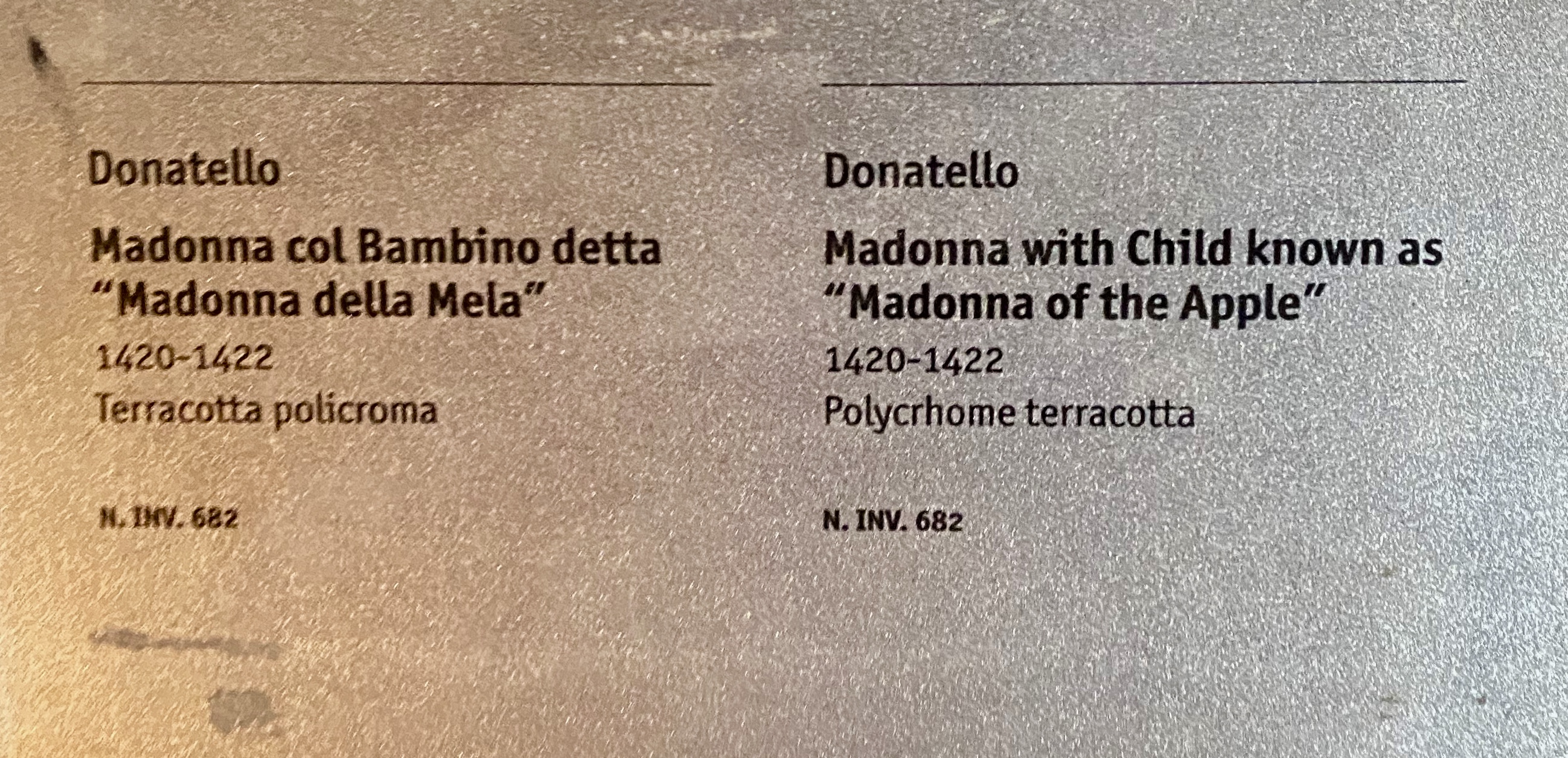

Donatello’s Madonna and Child, known as the Madonna and the Ropemakers:


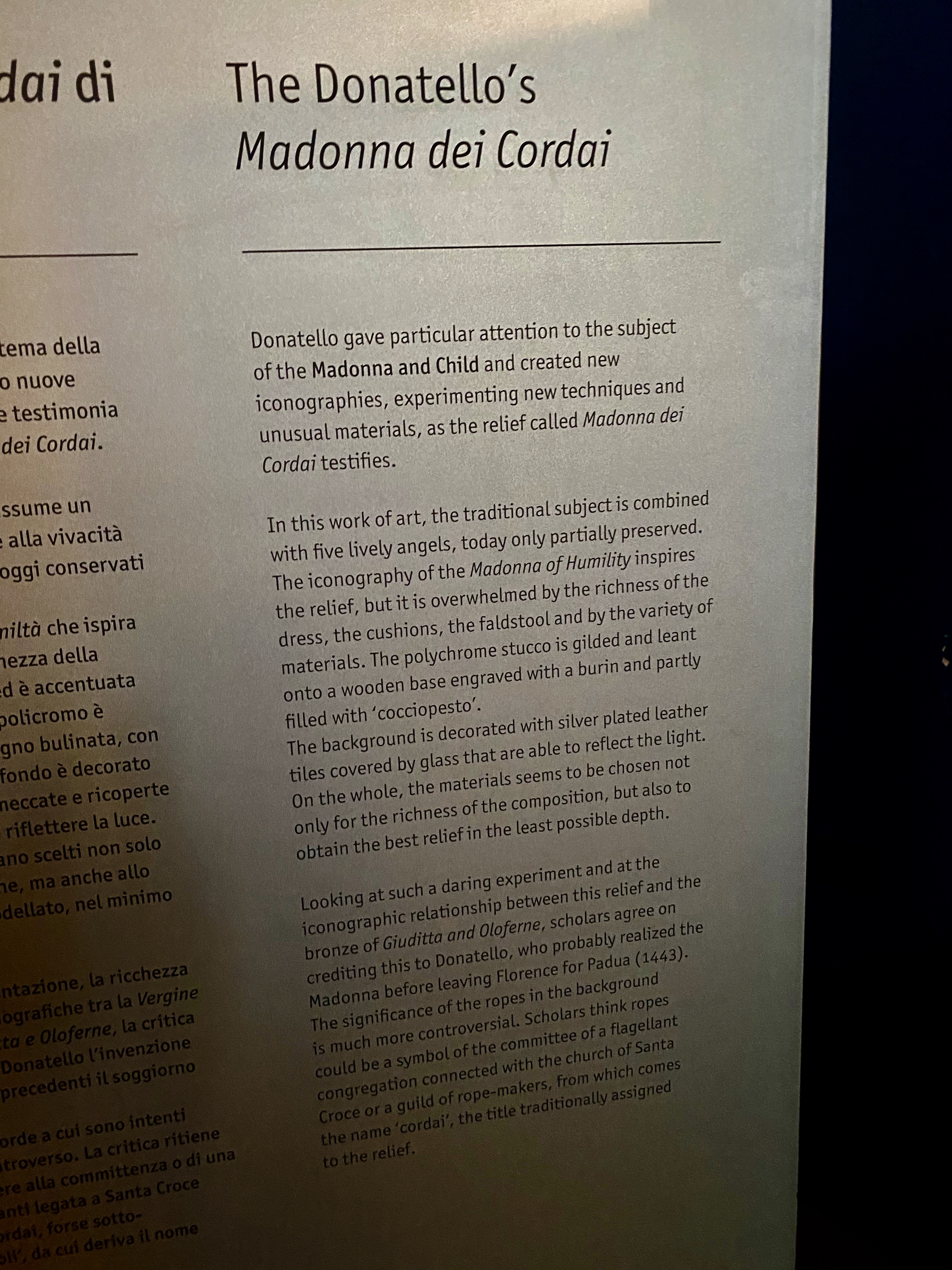
And then there are the cassone, or the wooden chests (like a hope chest for an aristocratic Italian woman), that Bardini collected. If they would turn on the lights in the gallery and let me get close to the works, I would be in heaven. As it is, I’m halfway to heaven, just looking at the furniture and thinking about the girls/women whose lives they represent.


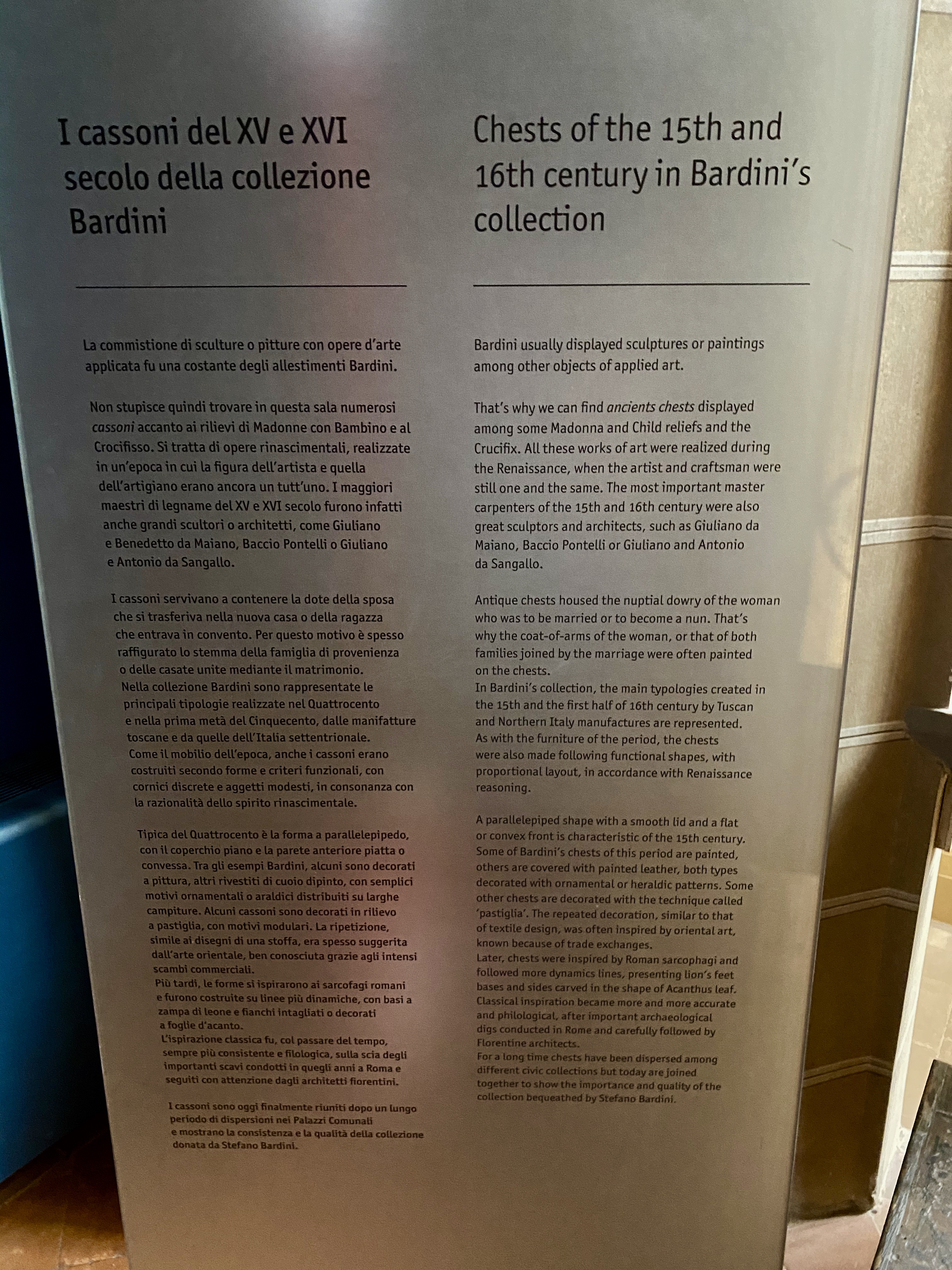


And then there are the cornice: the incredible frames that Bardini collected. Any American art museum would give eye teeth for one of these marvelous frames.

Moving into another gallery, I pass through another sumptuous doorway casing:

Beautiful painted crucifixes were also collected by Bardini. Below them, more cassone.
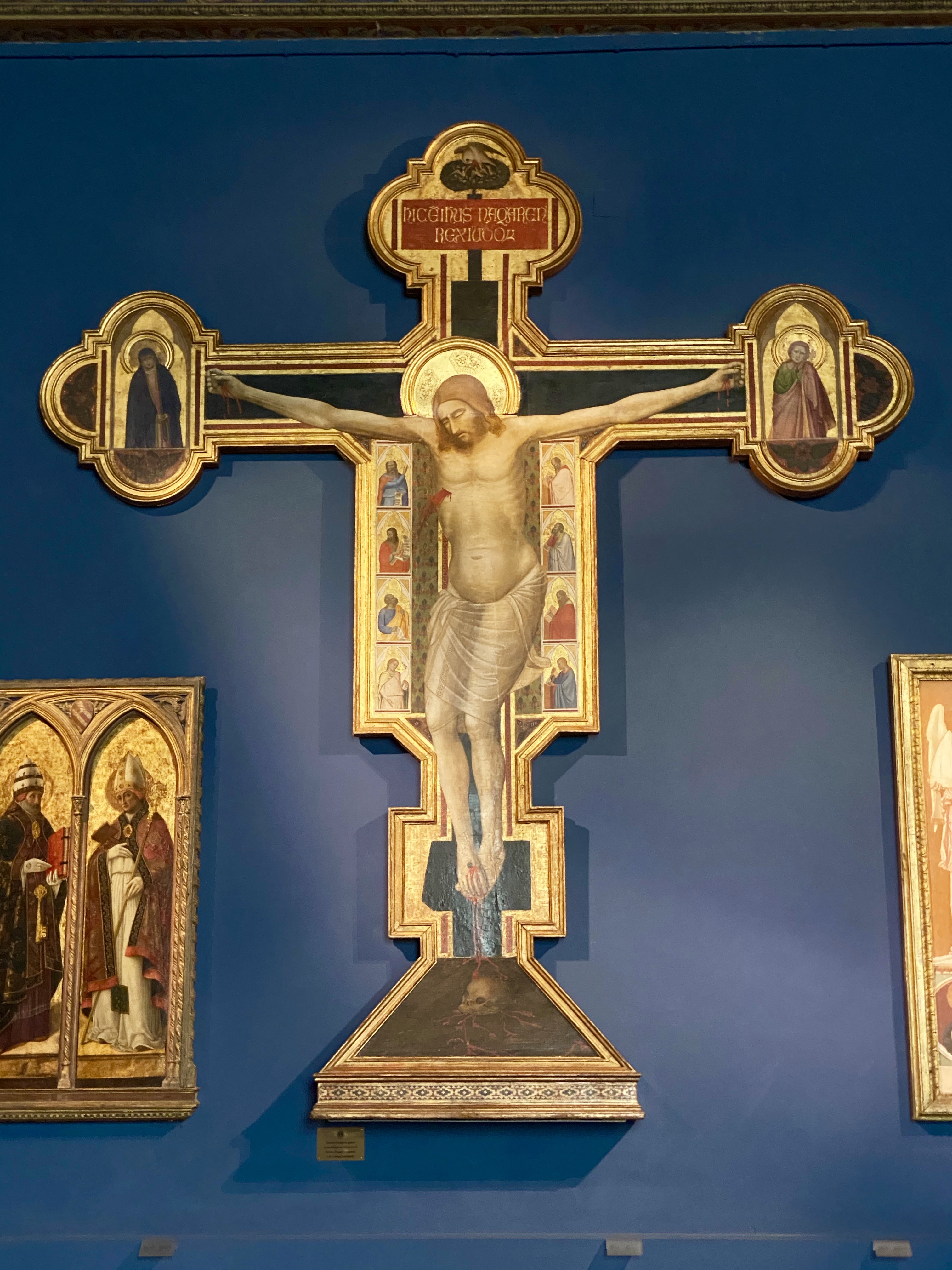


I could spend a day in this museum just studying the ceilings:


Or the Sienese sculpture:


Below, you might think you are looking at a rug on a floor, but it is a ceiling:
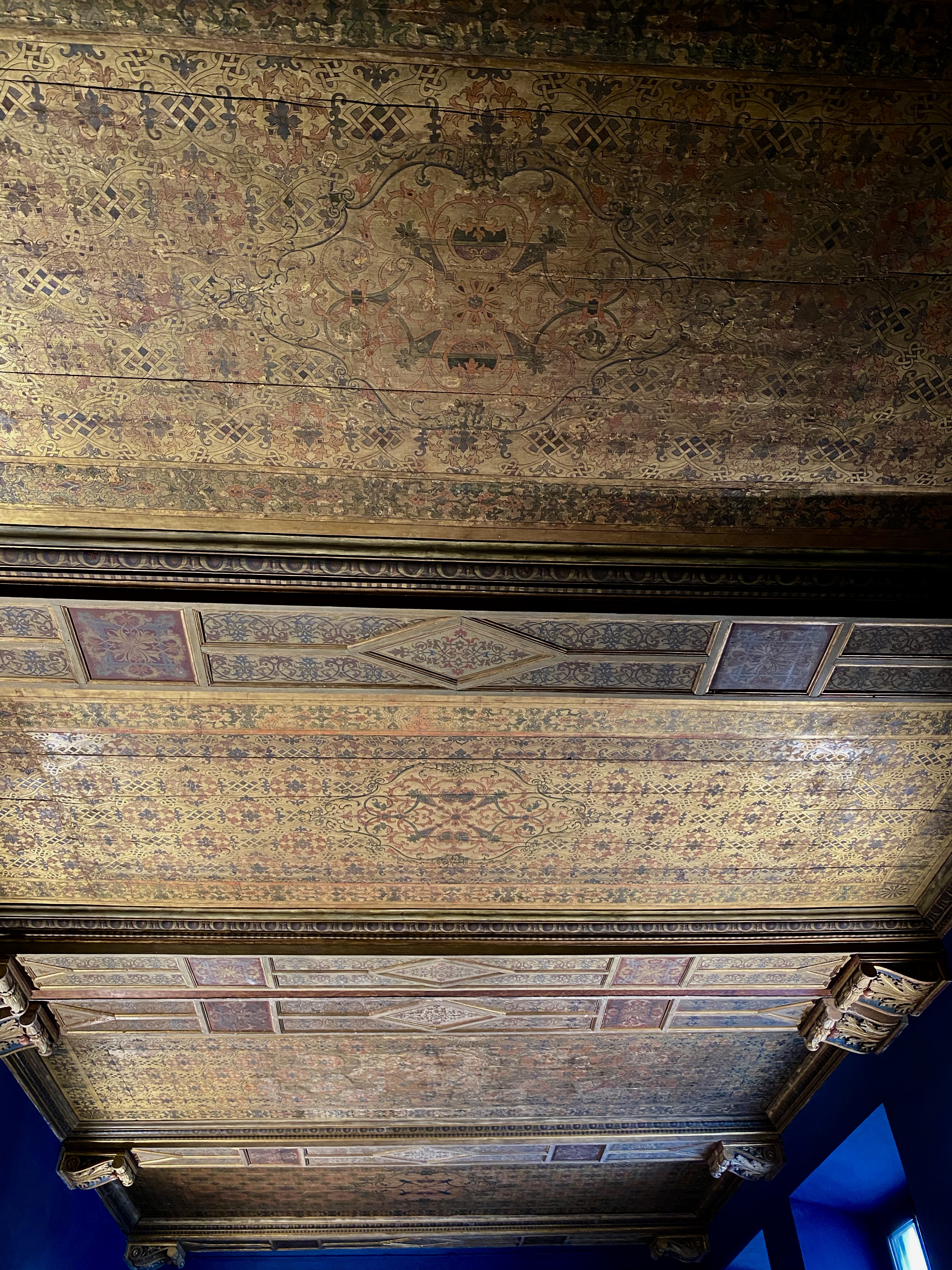
Upon leaving my favorite galleries, I go down this stairway, lined with rugs hung on walls. Very effective.

What a collection. Despite the guards, I love this museum!
I have the good fortune to live 2 blocks from this gorgeous landmark. It is almost never open for visits, but I got lucky and snagged a ticket for a rare tour recently.


Known as the Church of the Nativity of Christ and St. Nicholas the Wonderworker (Chiesa della Natività di Nostro Signore Gesù Cristo e San Nicola Taumaturgo), The Russian Orthodox church is located on via Leone X. Its style is a late 19th and early 20th century imitation of the earlier Naryshkin Baroque.
By the end of the 19th century, there was a small but elite Russian colony in Florence. Their much desired permanent place of worship came to fruition between 1899 and 1903. It was the first Russian Orthodox church to be built in Italy and was designed by Russian architect Mikhail Preobrazhensky (1854–1930), who had trained at Moscow’s Academy of Arts, and was erected under the supervision of Italian architects Giuseppe Coccini (1840–1900) and Giovanni Paciarelli (1862–1929). The church is a fine combination of Russian and Italian artistry.

The church is topped with one large central onion-shaped dome and four smaller ones, all covered with bright turquoise, green and white scales of majolica (manufactured by the Cantagalli factory of Florence) and topped with gilt crosses and chains. Laid out in the form of a Greek cross, the church grounds are surrounded by an iron railing fence with three monumental gates decorated with the double-headed imperial eagle and Florentine lily forged by the Michelucci foundry of Pistoia.

The church itself, constructed in red brick and grey stone (pietra Serena) from quarries near Fiesole, is decorated with 52 semi-circular or ogival arches known as kokočniki (named after the traditional Russian female headdress) and featuring six winged cherubs, like those of the Cathedral of the Resurrection of Christ in St. Petersburg.
Above the doorway, a canopy houses a Venetian-made mosaic icon of “Znamenie,” the mother of God, between stems of flowering lilies. On the north and south sides of the church, two other tabernacles house mosaics of the Peter and Paul.
The splendid wooden entrance door, which came from the private chapel at Villa Demidoff at San Donato, was inspired by Ghiberti’s Gates of Paradise. Depicting 22 scenes from the Old Testament, it had won its creator Rinaldo Barbetti first prize in a national exhibition in Florence in 1861.


True impetus was given to the church-building project when Archipriest Vladimir Levitsky (1840–1923) arrived in Florence in 1878. Despite many setbacks regarding, for instance, the designation of the land where the church should be built, Levitsky persevered and, in 1890, travelled to St. Petersburg to present the procurator-general of the synod with drawings prepared by the chosen architect, Preobrazhensky. A decree authorizing the construction of the church was issued in May 1891, but it took another seven years before the Russian Ministry of Foreign Affairs finally gave its permission.
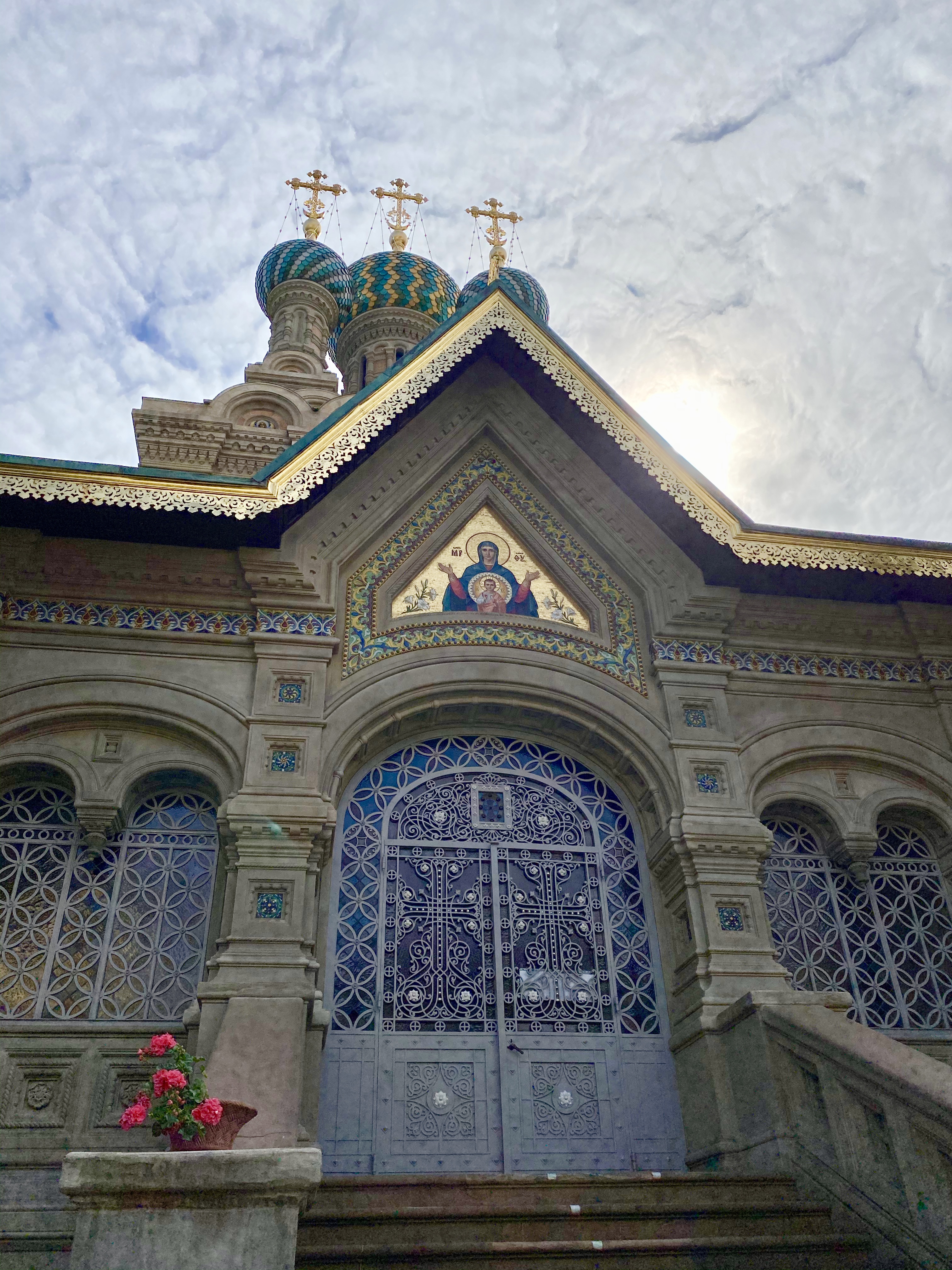


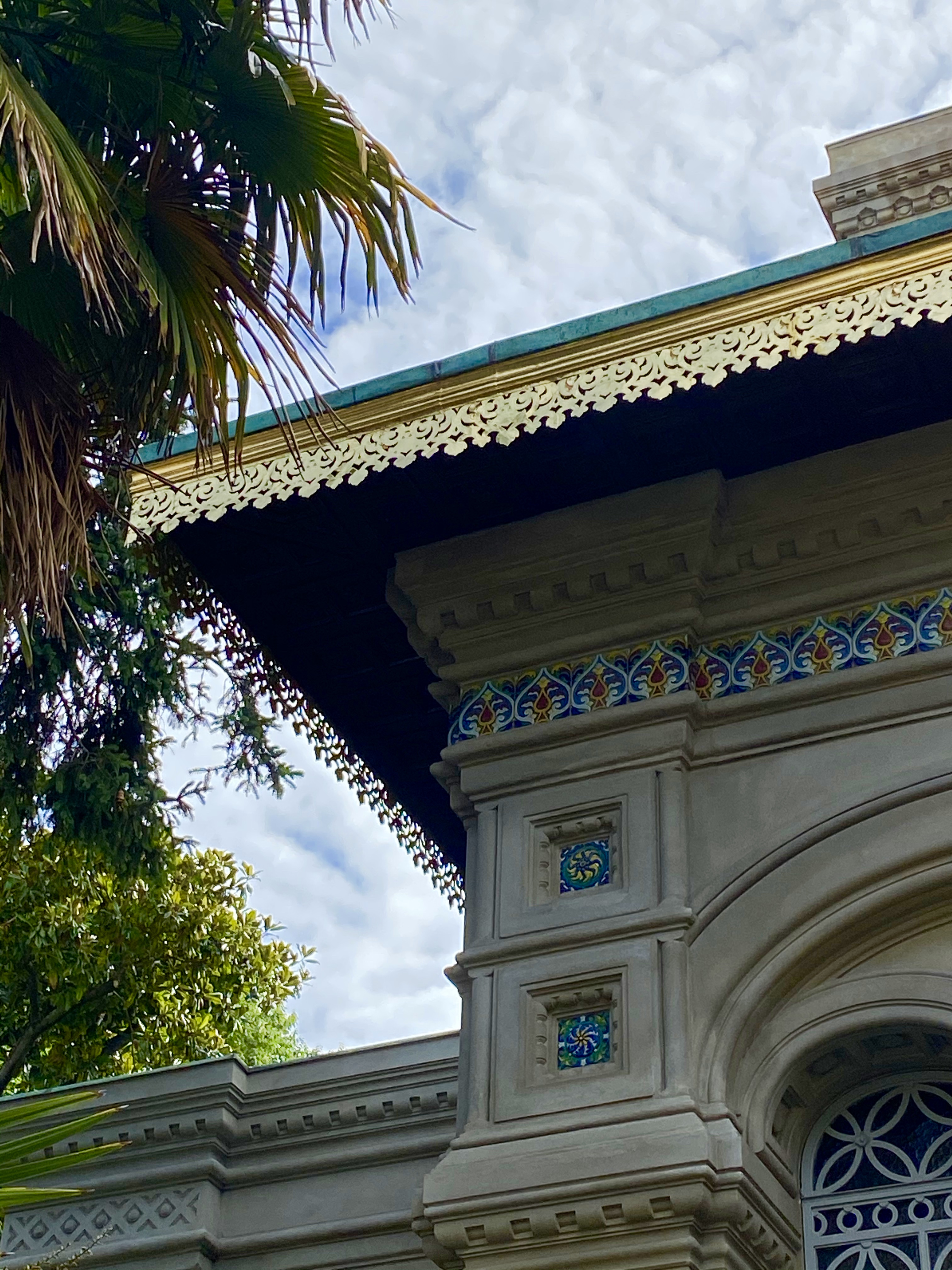











Typical of Orthodox churches in northern Russia at the time, the Florence church was built on two storeys: the lower church, designed to be warmer in winter, was dedicated to Saint Nicholas, in memory of the Demidoff chapel. The upper church, cooler in summer, was dedicated to the Nativity and features a magnificent marble iconostasis with icons of the patron saints of the imperial family gifted by the assassinated Tsar Nicholas II, a martyr of the Orthodox Church.




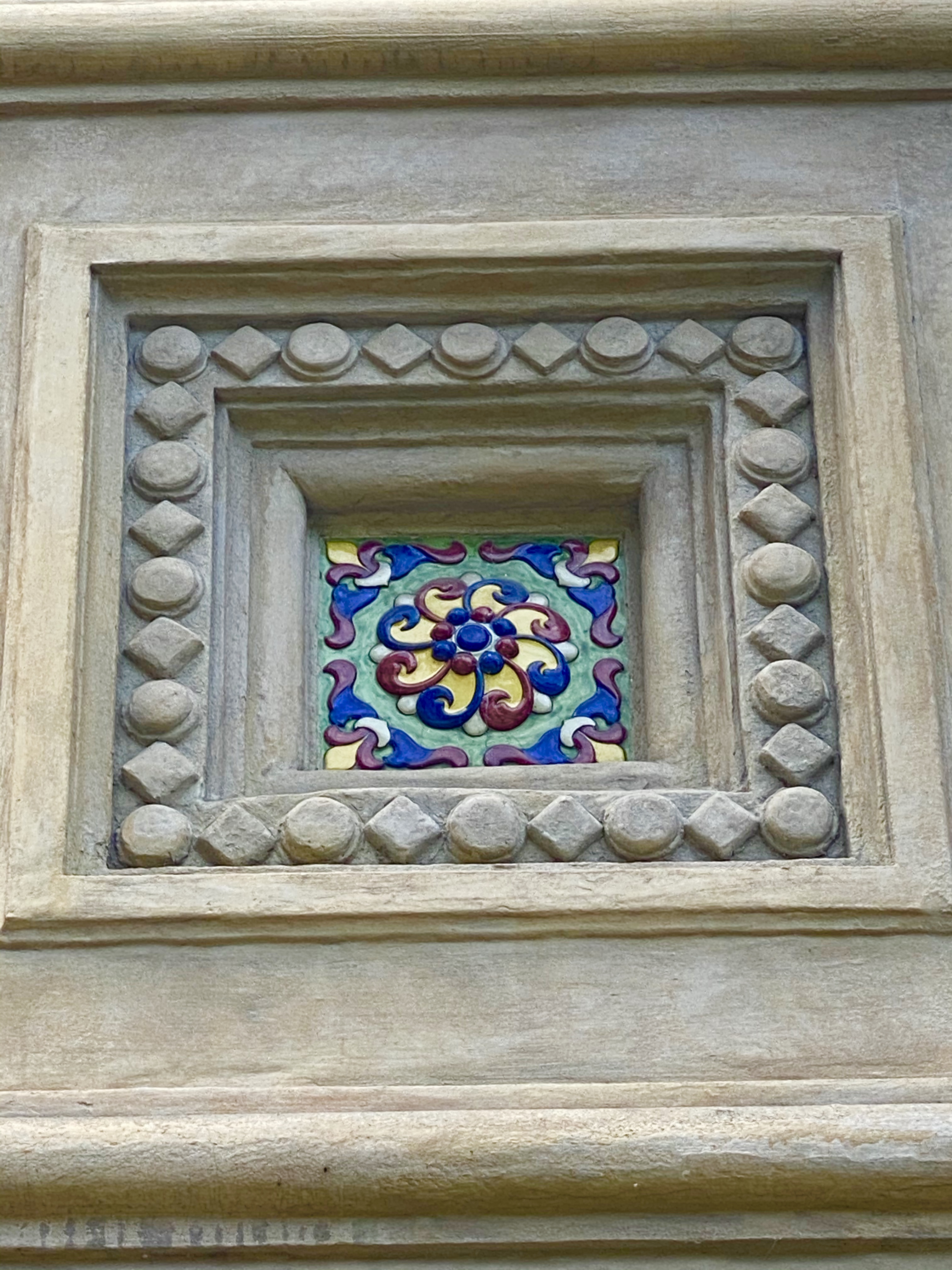


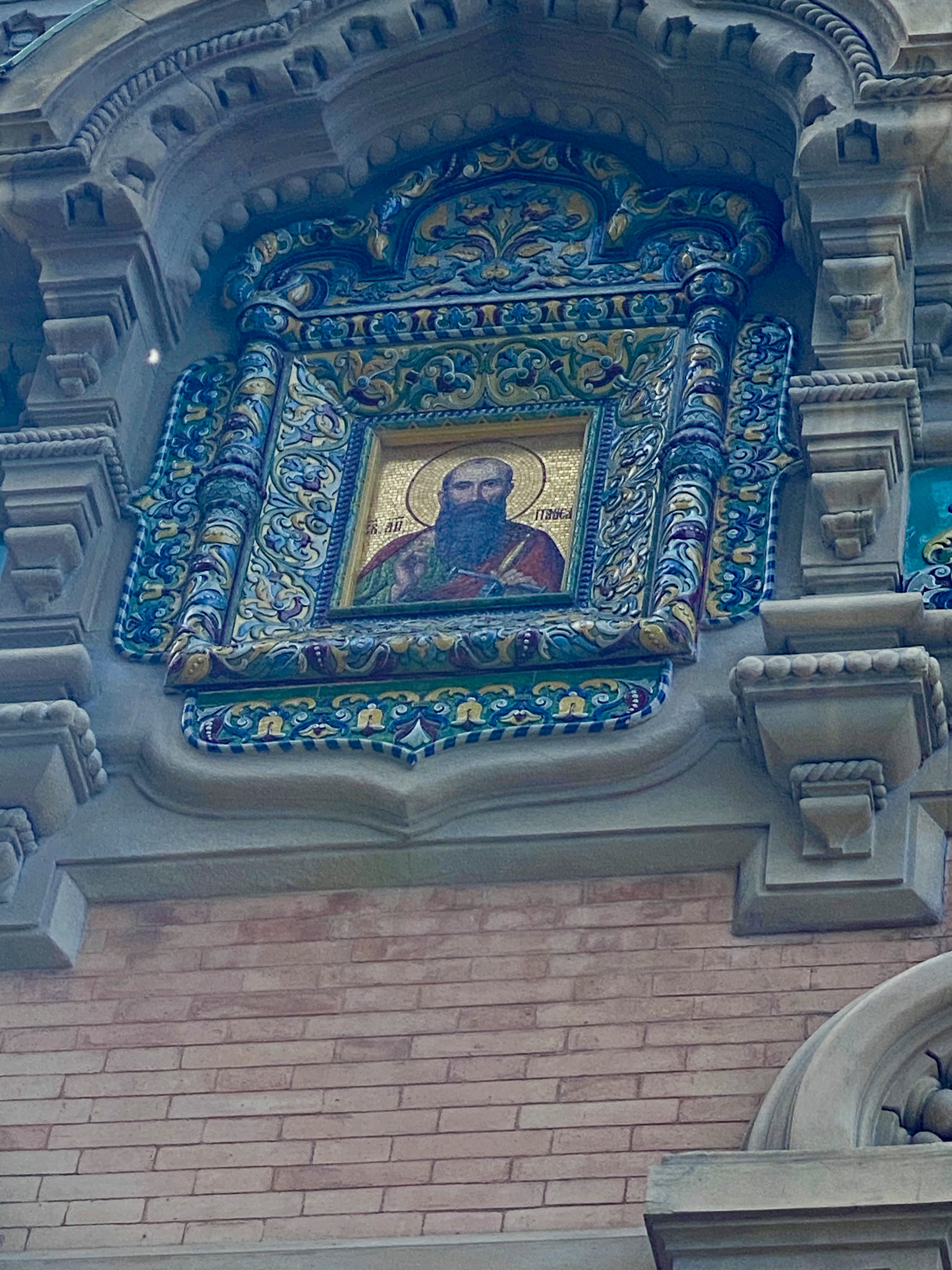








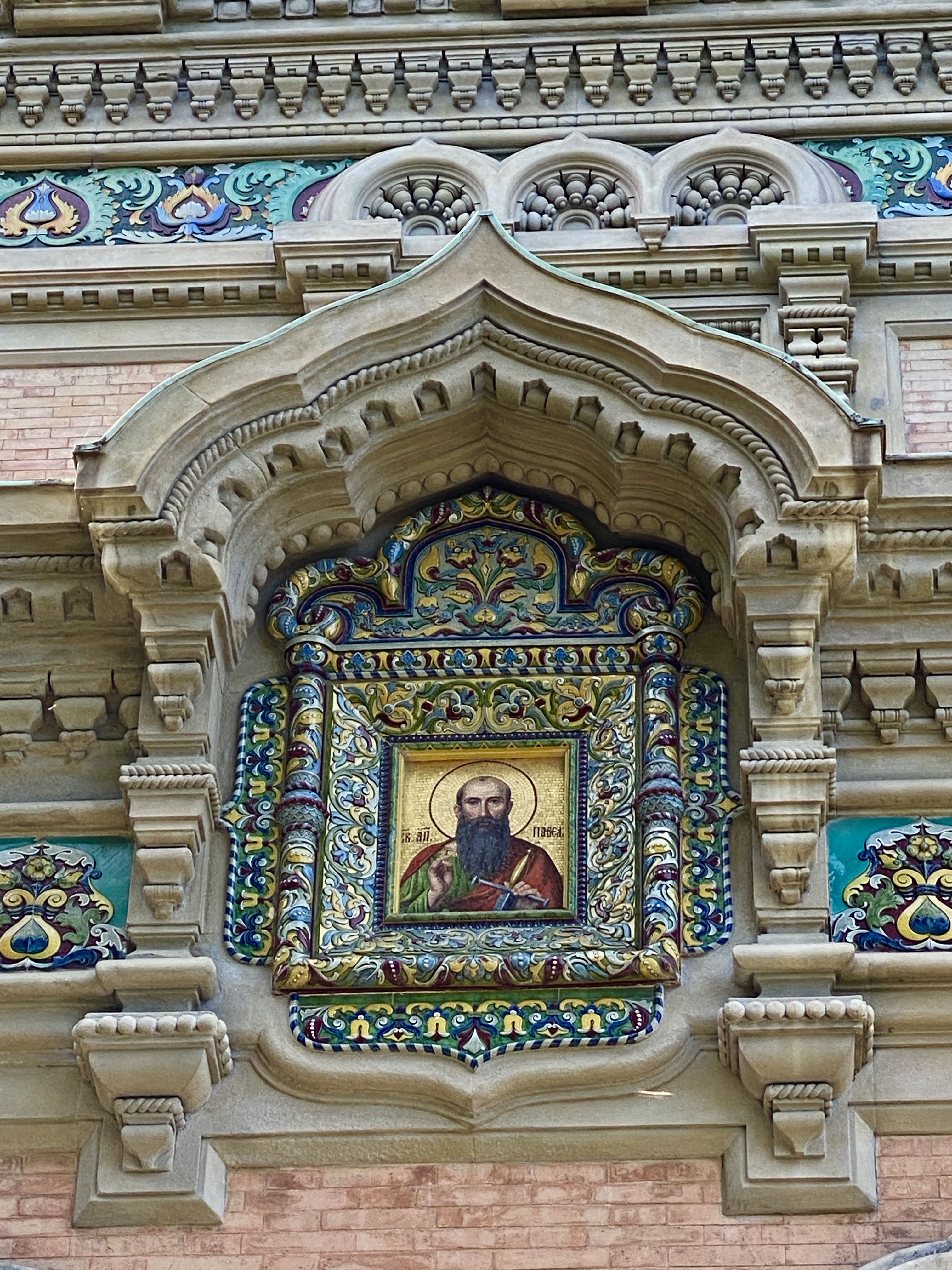













Here’s the article from Wikipedia:
Nicholas I of Russia’s daughter Grand Duchess Maria Nikolaïevna first had the idea of building a church for Florence’s Russian community in 1873, but it was only six years later that a large gift from prince Paul Pavlovitch Demidoff of San Donato allowed construction to commence. Pietro Berti was initially taken on to design it by archpriest Vladimir Levitsky, then curate of the Orthodox church at the Russian embassy. However, he later switched to the Russian academician Mikhail Preobrazhensky and the Florentine engineer Giuseppe Boccini.
Preobrajensky’s first designs of 1883-85 were too ambitious, so a temporary church was built on a site acquired by the embassy. This became the parish church in 1888. Levitsky eventually raised enough funds to build a permanent structure and in 1897 the Russian ambassador and foreign minister approved plans produced in 1890 by Preobrajensky.
The first stone was laid on 28 October 1899 at a ceremony attended by count Caracciolo di Sarno, prefect of Florence, general Antonio Baldissera, the Russian ambassador Aleksandr Nelidov and consul general Tchelebidaky.
The lower part of the church (dedicated to St Nicholas the Wonderworker) was consecrated on 21 October 1902 and the upper church (dedicated to the Nativity of Christ) was consecrated on 8 November 1903. However, the building as a whole was only fully completed the following year.
After the 1917 Revolution the church in Florence lost Russian state support and in 1921 it became independent from the church back in Russia despite attempts by Soviet diplomats to claim ownership of the building. From 1920 onwards it was under the jurisdiction of Eulogius and in February 1931 it joined the jurisdiction of the Archdiocese of Russian Orthodox churches in Western Europe.
Constantine I of Greece died in exile in Palermo on 11 January 1923 and later that year he was buried in the church, followed in 1926 by his mother queen Olga Constantinovna of Russia and in 1932 by his widow Sophia of Prussia. All three sets of remains were moved to the Tatoi Palace in Greece in November 1936, a year after the restoration of the Greek monarchy.





To visit the church, it is necessary to make an appointment. For further information call +39 055 477986.










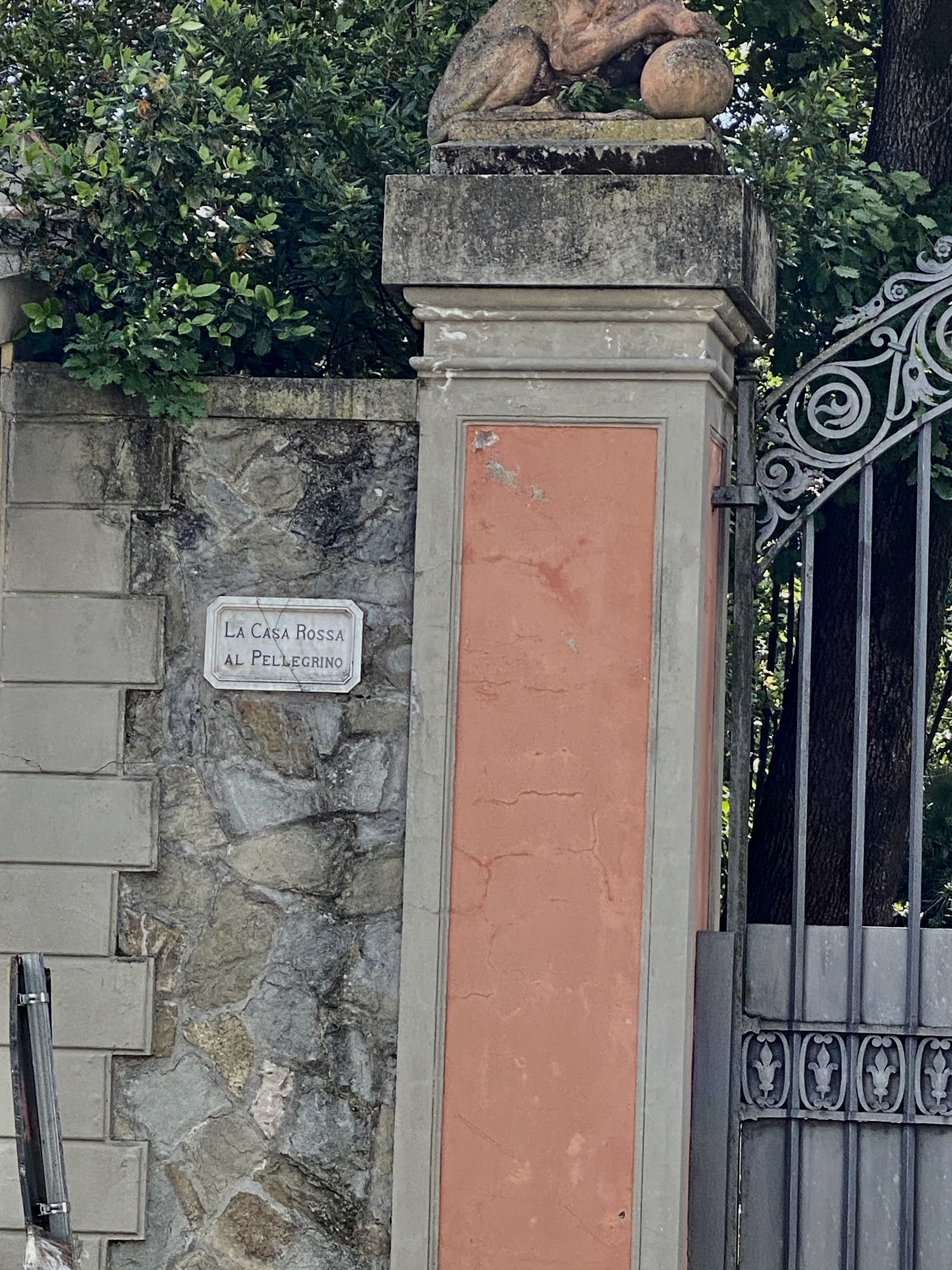


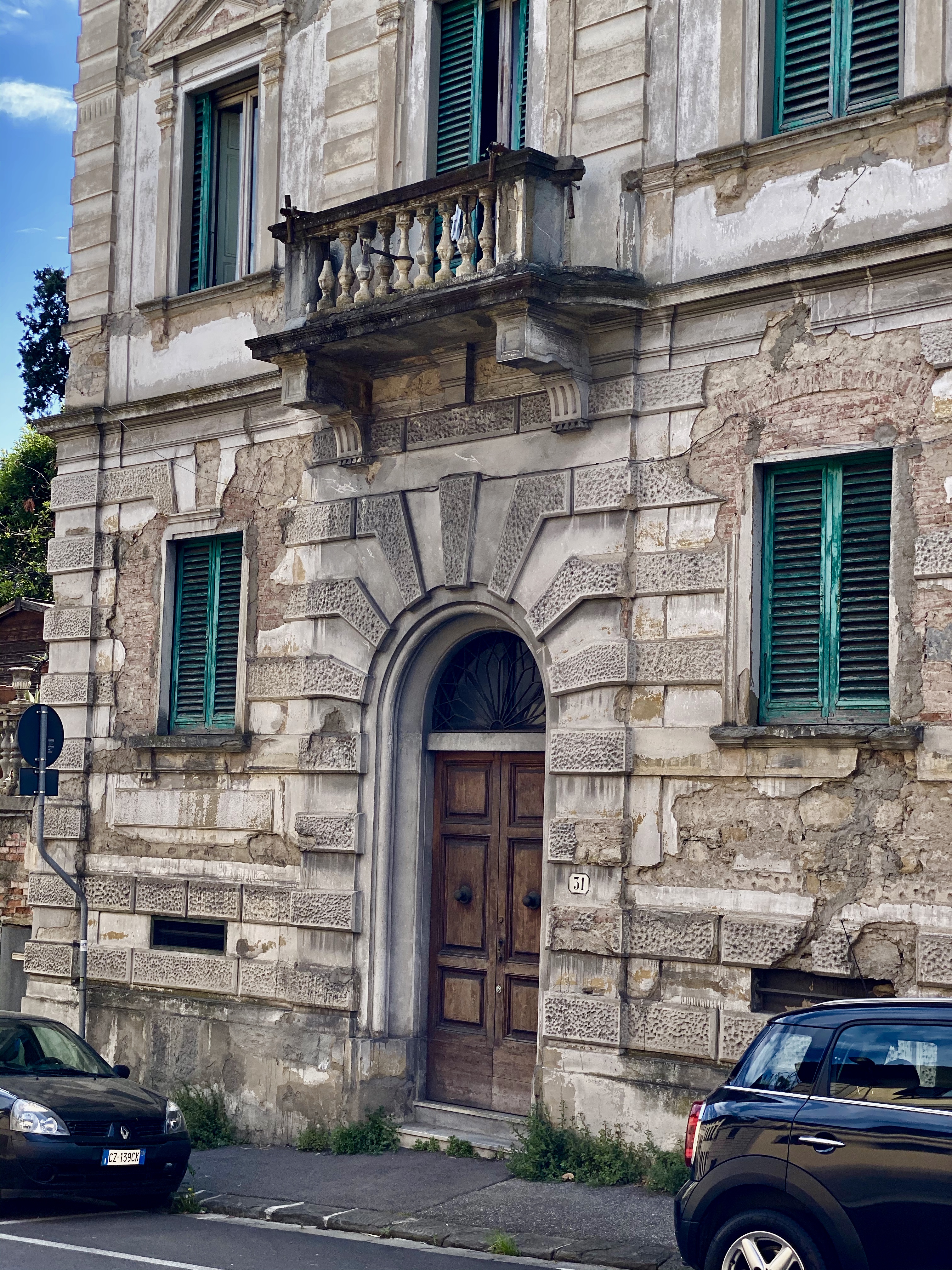
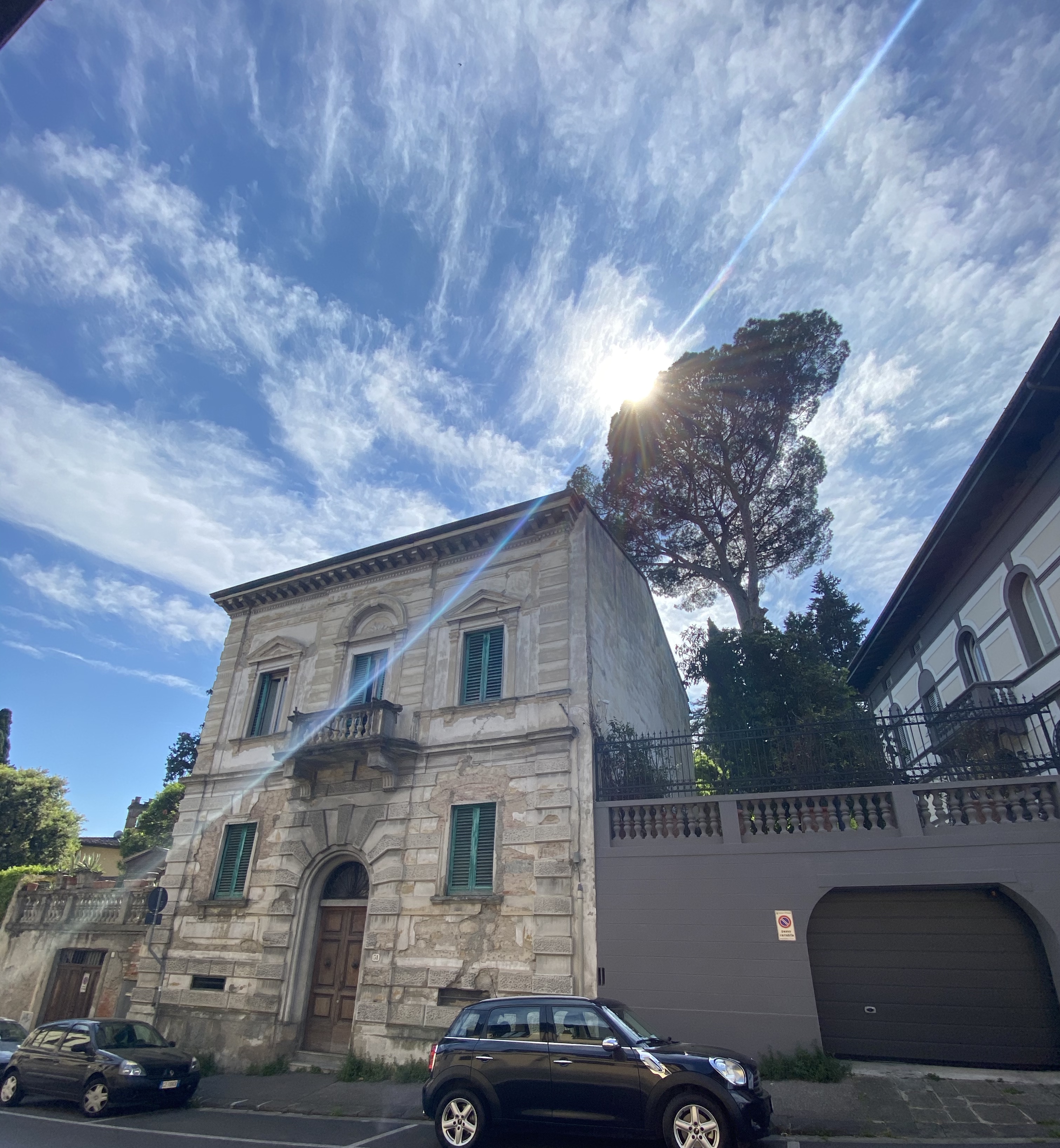

Little by little, she is coming back to life.
The Uffizi is still closed to the public, but I was reassured that Cosimo I, il Pater Patriae, is still waiting for me, as is Lorenzo il Magnifico. Very nice to know!



Together these Medici gentlemen guard the Uffizi, even during a pandemic.
The nearby Palazzo Vecchio, is partially open. The museum and tours are not yet ready for visitors, but the elegant and lovely cortile is ready to be admired again. And, I am a very willing supplicant.
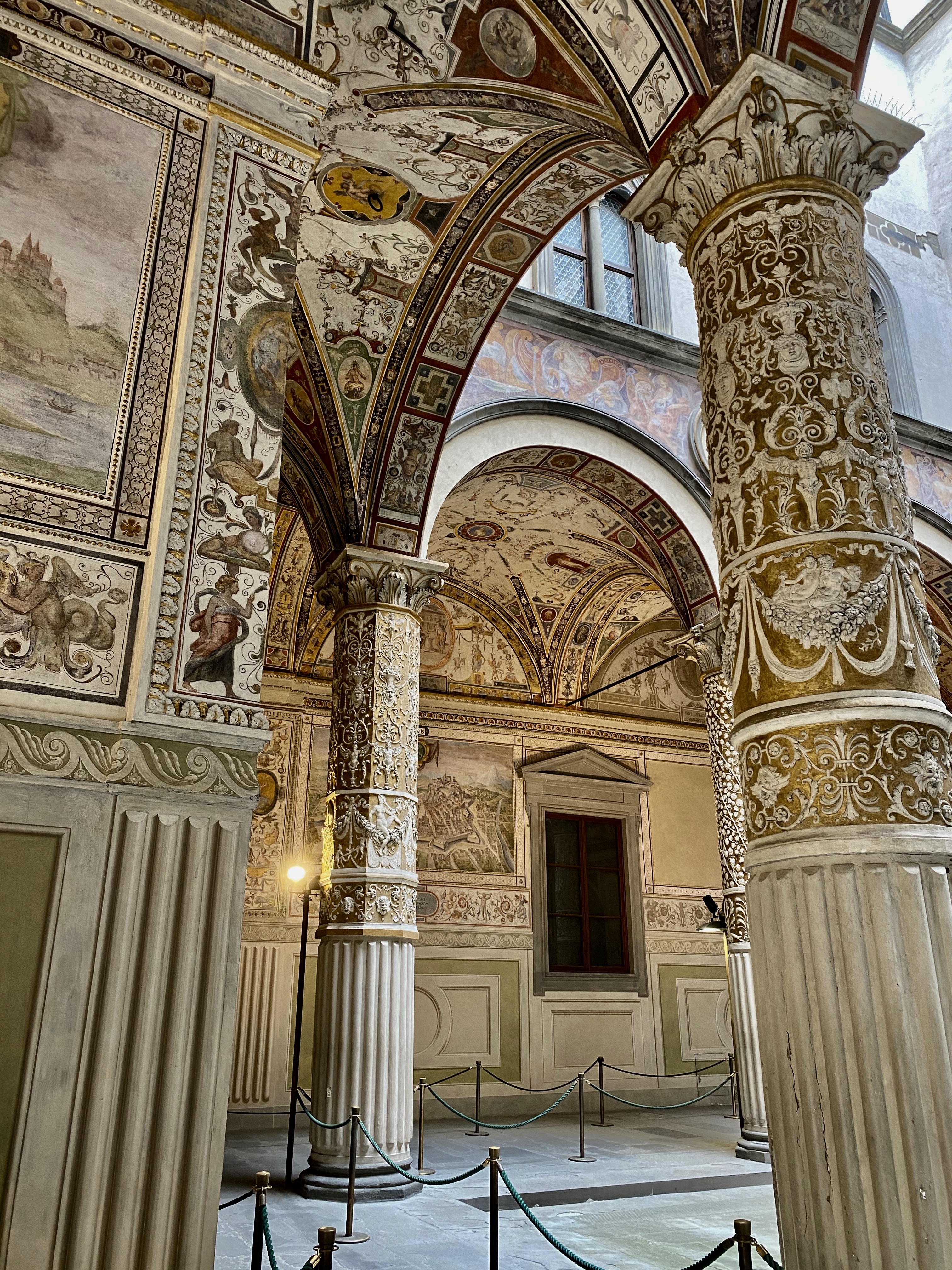
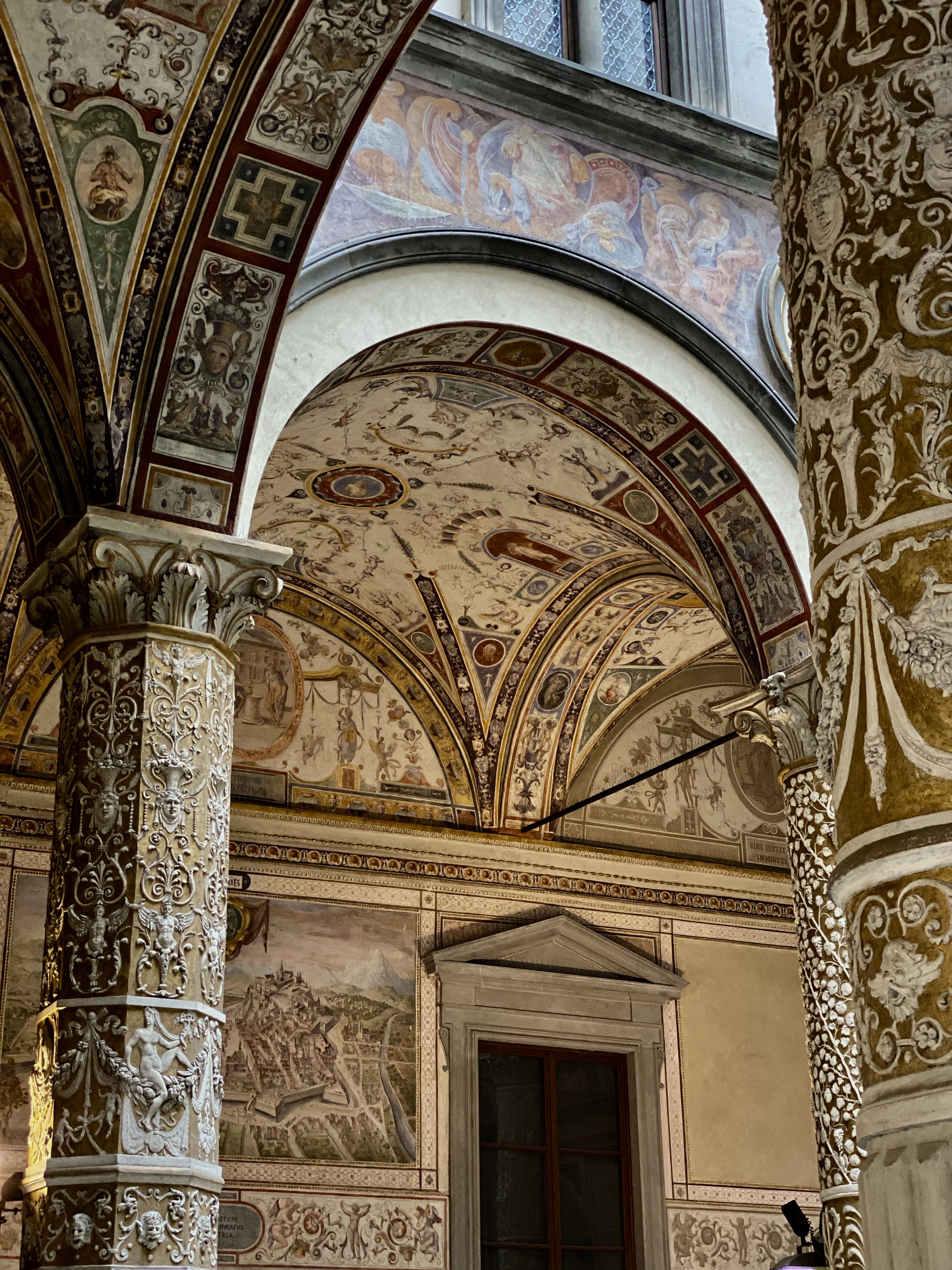














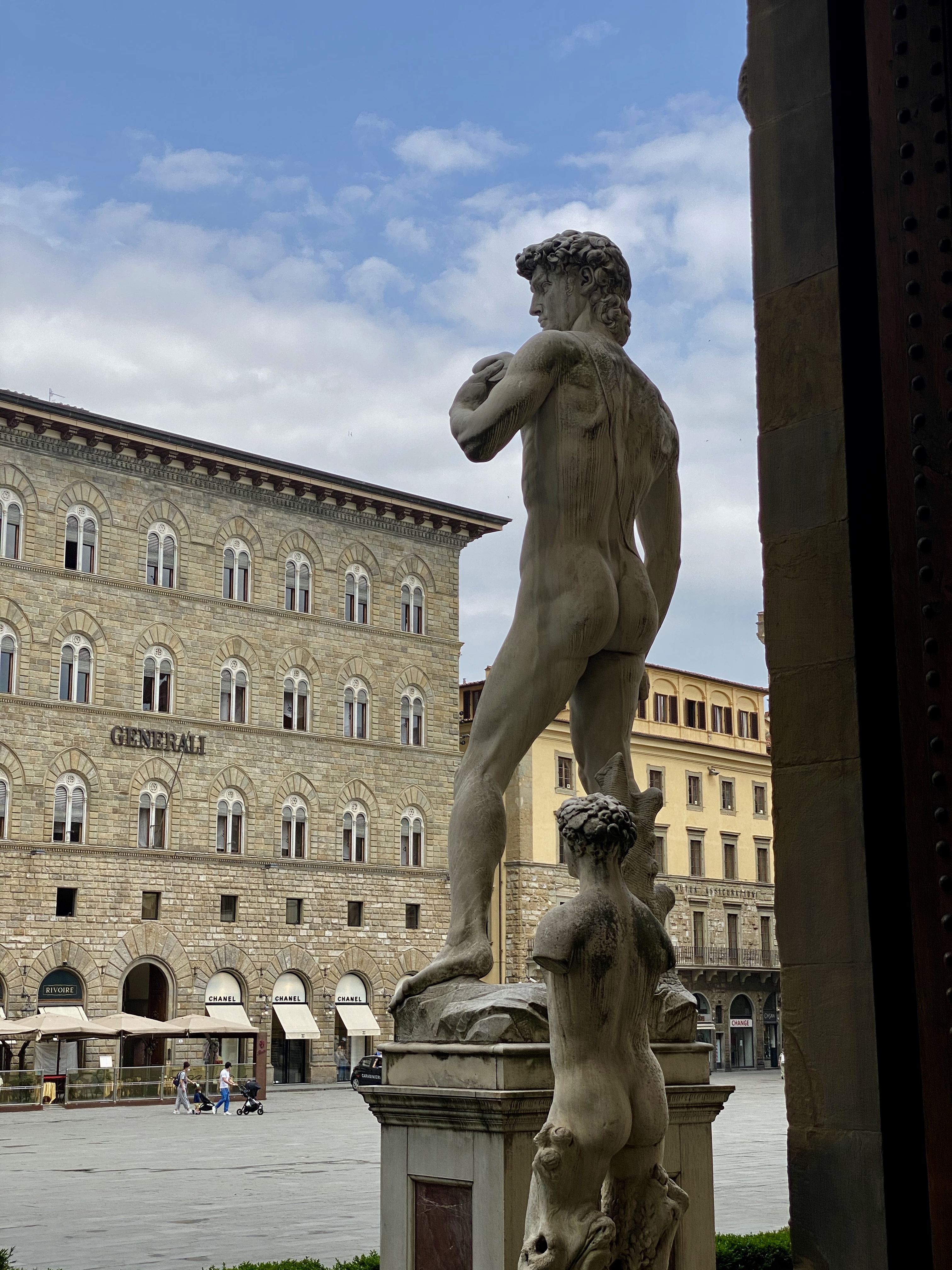

And a quick stop for a real cappuccino served in a real cup at the bar at Scudieri. Life is good!

The art nouveau masterpieces of domestic architecture in Florence delight me every time I walk by. Here they are again. Aren’t they great?


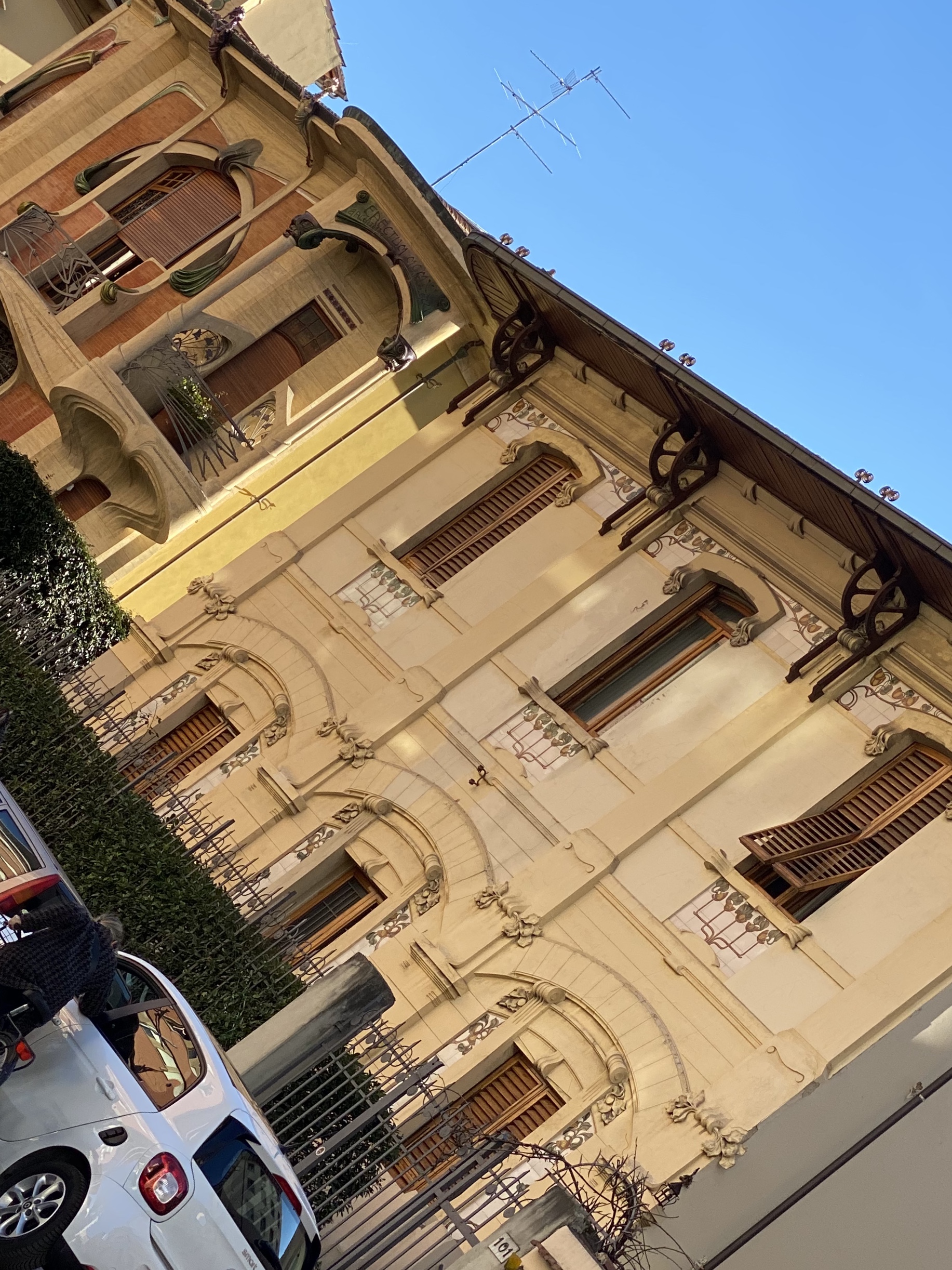








Wow. Just wow. I don’t know why I never paid a visit to this astounding place before now!






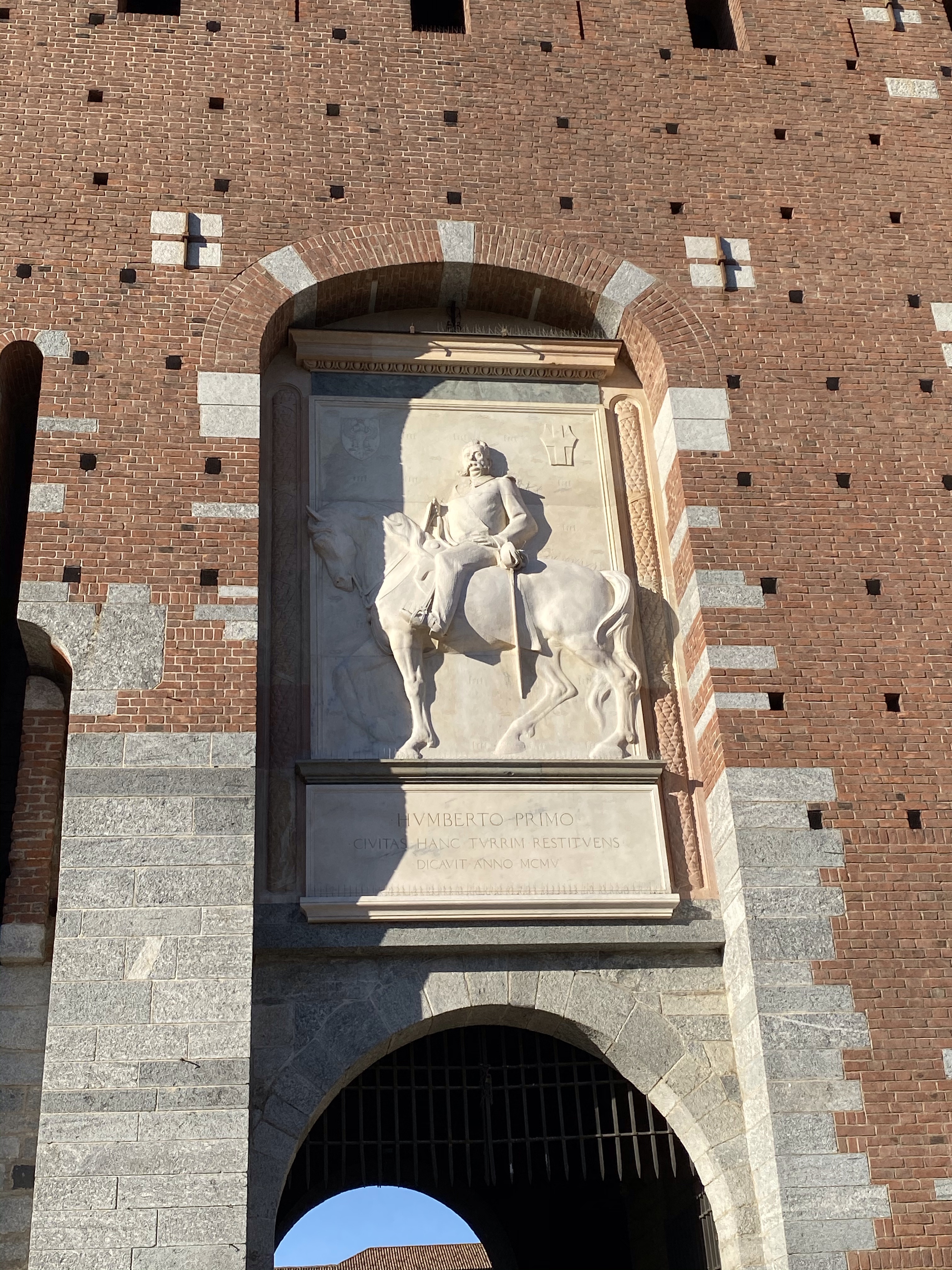





































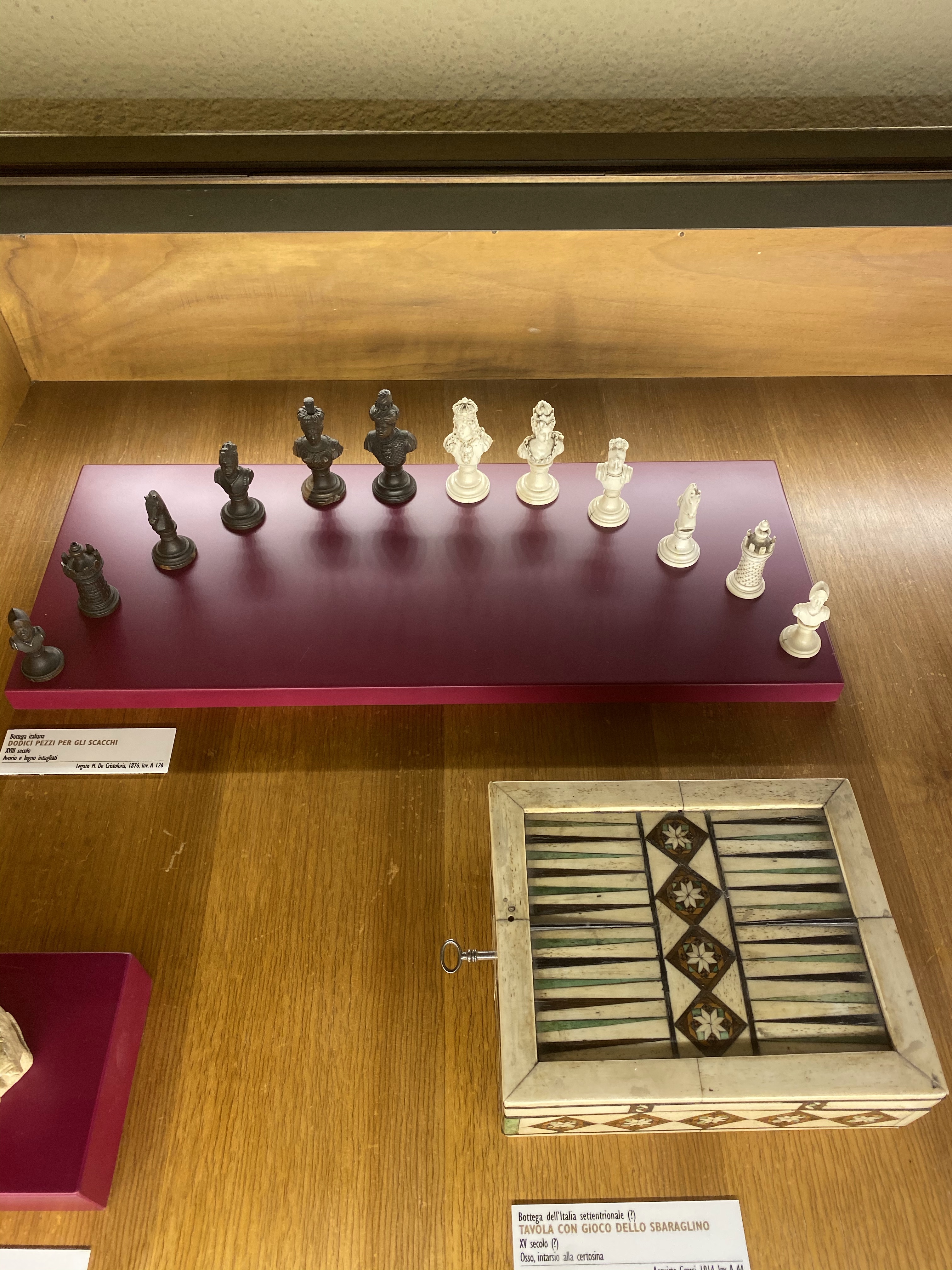

















And, last, but certainly not least, you don’t see a lot of elephants in Italian art, but here is a big exception to the rule.


Yikes! Nothing like being met by an army! The outstanding collection of armor below is just one of the many parts of the Poldi Pezzoli Museum that will amaze you in Milan.


The Poldi Pezzoli Museum is housed in the original 19th-century mansion built by Milanese aristocrat, Gian Giacomo Poldi Pezzoli (1822-1879). His parents and grandparents had already begun the family’s art collection and he built his palazzo in this tony section of Milan to house the collection it as he continued to enlarge it. When he died, he left his collection and house to the Brera Academy. The Poldi Pezzoli Museum was opened to the public in 1881 on the occasion of the National Exposition in Milan and has since become an archetype for other famous collectors.


The Poldi Pezzoli is one of the most important and famous house-museums in the world. Located near the landmark Teatro La Scala and the world-renowned fashion district, this house-museum is beloved by the Milanese and international public.
The Poldi Pezzoli is a member of the Circuit of Historic House Museums of Milan, a city network established in 2008 with the aim of promoting the Milanese cultural and artistic heritage.
During World War II, the museum was severely damaged and many paintings were completely destroyed. The palazzo itself was rebuilt and in 1951 it was reopened to the public.
Not all of the house was restored as it appeared during Poldi Pezzoli’s life, but it was instead fitted out as a museum. The grand entryway, with its fountain filled with koi and its spiral staircase are original, as are at least 2 of the piano nobile galleries. You’ll recognize them right away in the pictures below.
The outstanding collection includes objects from the medieval period to the 19th century, with the famous armor, Old Master paintings, sculptures, carpets, lace and embroidery, jewels, porcelain, glass, furniture, sundials and clocks: over 5000 extraordinary pieces.
Let’s begin at the entry way. What a greeting!


Below: the view of the fountain from atop the staircase:


I was a bit obsessed by the fountain; can you tell?
Allora, moving on:



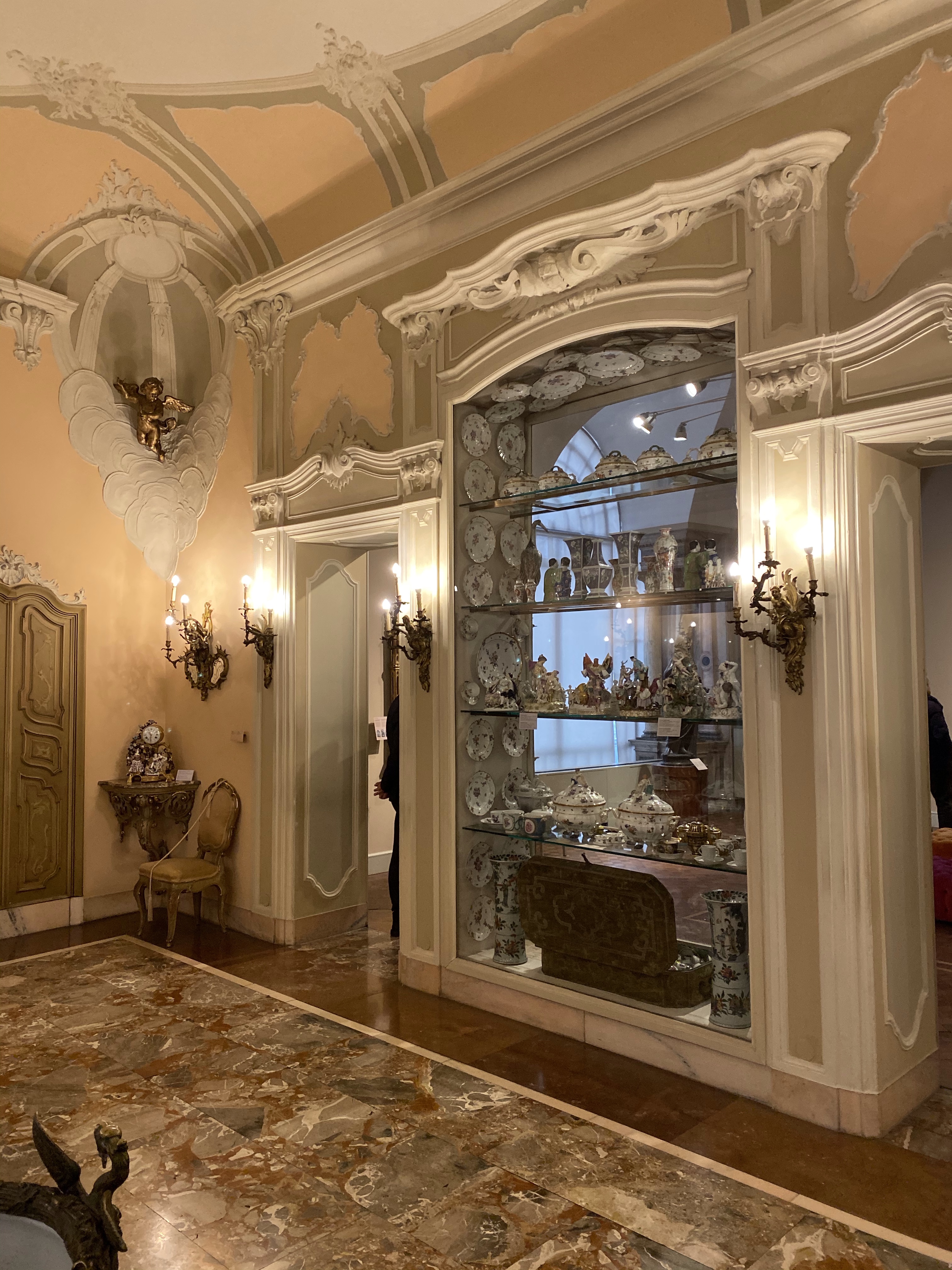


Angels in the architecture:

Dragons on the pottery:



I love the way they display the ceramics: why not affix objets to the ceiling? It is a wasted flat space otherwise. Genius.

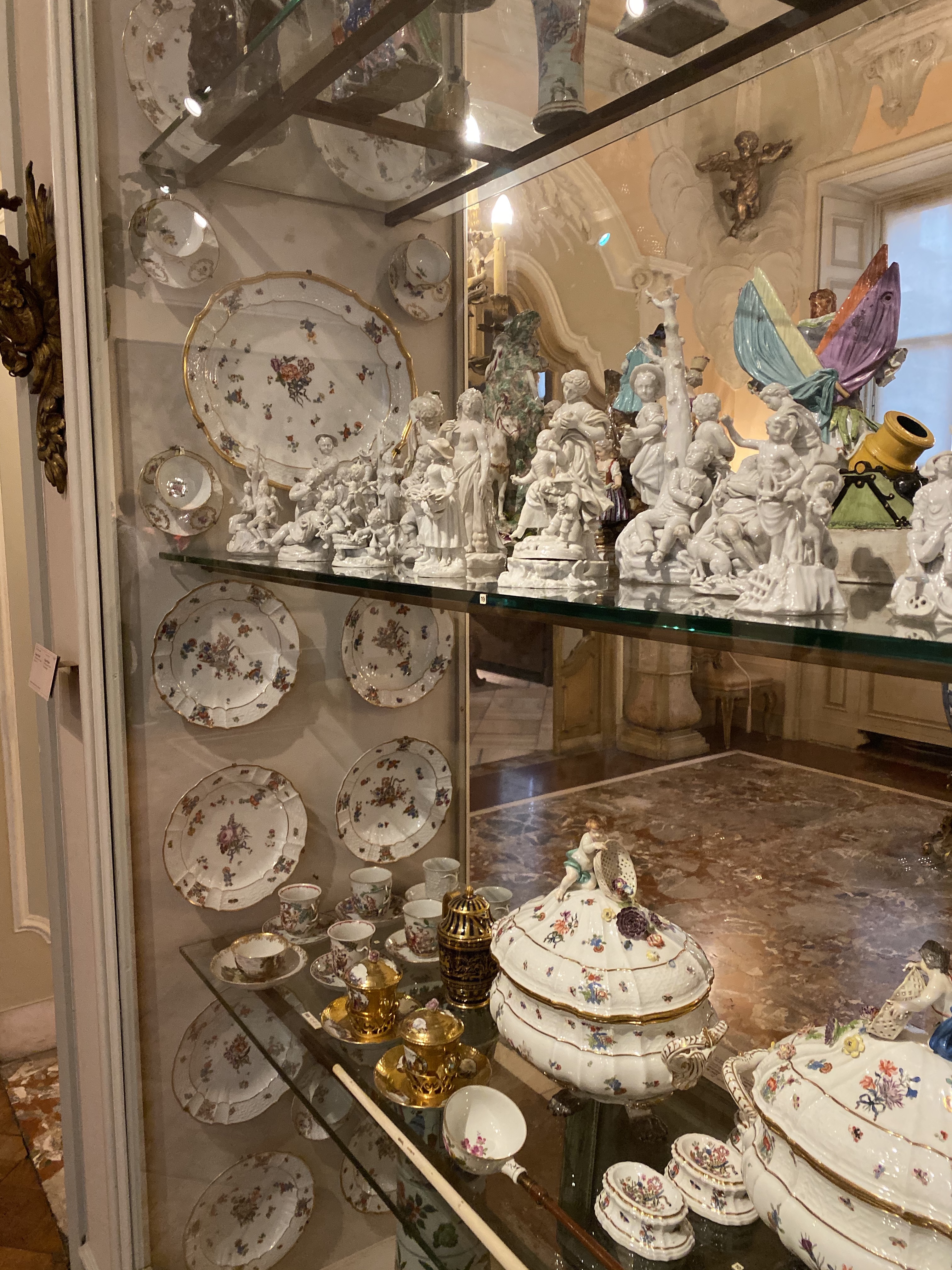
Moving on to the important objets: Piero del Pollaiuolo magnificent Portrait of a Young Lady.



Botticelli’s The Dead Christ Mourned:


Bellini:







Ah, the glass. It gets me every time:






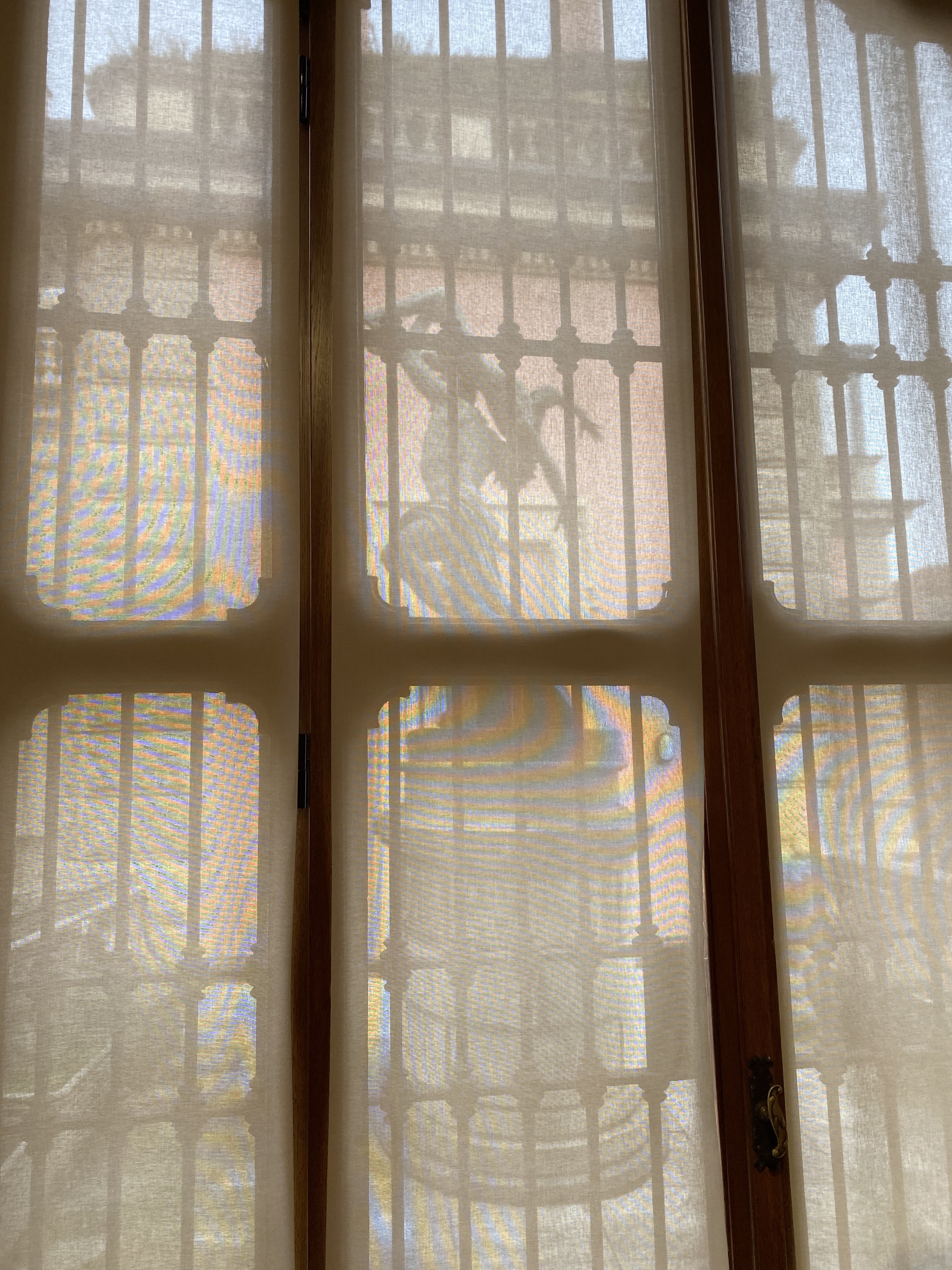

The panel below made me laugh. I love how the sculptor included the slippers at the side of the bed! In this dastardly scene of homicide, don’t forget the slippers!








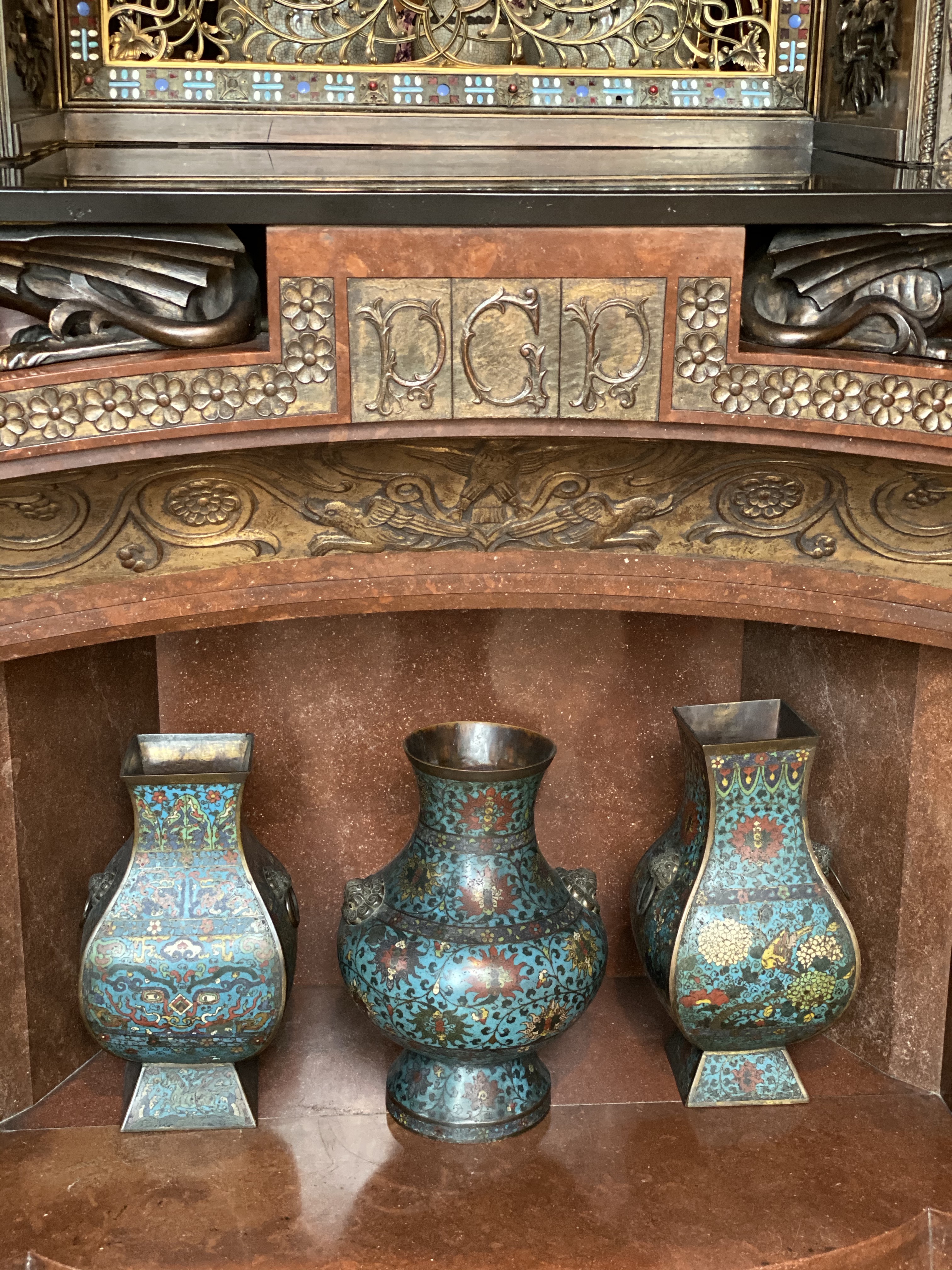




Since 2019 marks the 500th anniversary of Leonardo da Vinci’s death, the world is paying homage to the great artist with myriad exhibitions. The Poldi Pezzoli joins them with a major painting, on loan from the Russian Hermitage Museum, just for the occasion. Leonardo painted this work during his time living in Milan.






You must be logged in to post a comment.